|
The first time I saw Flyover Canada, it got me in the maple leaf feelies. This was back in 2013, and I had recently finished the first edition of The Great Canadian Bucket List. It felt especially poignant seeing Canada’s sprawling, diverse landscape on a 65-foot spherical screen, suspended on a moving chair that banked and dipped with the movement of flight. The visual and sensory sensation of soaring over familiar cities and oceans, icecaps and prairies brought a tear to my eye. For everyone else, it was impossible to leave the theatre without a sense of awe, wonder and pride, whether you had personally visited any of these places or not. Located at Canada Place in Vancouver, I added Flyover to the Western Canada Bucket List and future editions, and have since taken a half dozen visitors for the ride. It’s the perfect way to give anyone a powerful impression of Canada in a short space of time. This summer, Flyover launched a new show, entitled Awaken Canada. It’s been over a decade since the original spectacle, and with new developments in cameras and drones, Flyover now benefits from some neat cinematic tricks that allow it to showcase different scenes that complement the original show. As before, guests are first shown a short, immersive film before entering the main ride. This new introduction is animated, riffing on a central, inclusive theme of Home. What and where is home? Locals, immigrants, seniors, kids, northerners and southerners all weigh in. Home, they reveal, is a child’s hand in their grandmothers. Home is a dip in a warm summer lake. Home is the rain that falls in a city, or the big sky above golden wheat in the prairies. Guests are then efficiently ushered through a short waiting area, and to their seats on different levels. Rest assured, there are no bad seats with Flyover. Everyone gets the same experience, so take your time, put bags under your chair, strap in, and get ready for flight.  Awaken Canada starts up north, over the ice and snow. Immediately I recognize some of the landmarks, places I have visited, places I have not. Mount Thor in Nunavut was unmistakable, the largest granite rock in the world, gleaming in the sun. “That’s the Blue Nose,” I tell my delighted kids as we enter Nova Scotia, “I’ve been on that boat! And that’s Lunenburg!” There’s no voiceover in the film, just one sweeping image after another set to music, a 4D experience as we soar through clouds and get sprayed by wind and mist. “That waterfall is called Pissing Mare Falls, this is Gros Morne National Park,” I tell my daughter, who has a solid giggle. She's getting the full Canadian Bucket List narration. We collectively “whoa” when we fly over a northern community, and then suddenly dip into a small fishing hole to submerge into the cold ocean with a pod of beluga whales. After the show, we all agree this was the best part of the ride. Then we see fall foliage blooming in Ontario, and now we’re tracking a skier doing tricks across the urban playground of Old Quebec City. The camera swoops through tunnels and between sails, clearly benefitting from drones that can go where helicopters cannot. There’s more of a focus on people: fishing, walking, riding horses, farming, and most spectacularly, climbing mountains and frozen waterfalls. Unlike the similar-type rides at Disney theme parks (like Soaring Around the World, Soaring Over California etc) no CGI is necessary. The production and timing of the shots however, is mind-boggling.
Over the prairies, into the mighty Rockies, and across the sandy beaches of Vancouver Island, the flight concludes with a night-time time-lapse into Vancouver, concluding with the northern lights, of course. The ten-minute ride has taken in a lot, but a scenic journey over Canada can take a lifetime. Leaving the theatre makes you want to discover more: to visit these places and see what they look like from the ground. Having seen more of Canada than most, I can confirm it’s just as spectacular.
0 Comments
Here’s an actual conversation with my six-year-old on the final day of our eventful spring break. “Well, what was your favourite part of our trip? Was it visiting the Statue of Liberty that you so desperately wanted to see? Was it the American Museum of Natural History, or that hilarious show we saw on Broadway? Was it hanging out with your aunt in Central Park, or taking the busy subway around the city? Was it spending a week playing in the big waves of Copacabana? Was it the cable car to Sugar Loaf Mountain to get that incredible view of Rio? Maybe it was the Wishing Tree and the monkeys we saw at the top of the mountain? Was it climbing on massive floats and dressing up in carnival costumes to dance with a beautiful samba princess? Maybe it was the sharks and stingrays we saw at the aquarium, or eating beach corn, grilled queijo and drinking coconuts at the beach? Playing with your cute Brazilian cousins, riding a bike along the beach, or spending time with your grandparents who spoiled you rotten with candy and cakes?” Galileo thought about all this for a half a second, and replied: “My favourite part was taking the airplane.” I write these words during our final flight home after two-and-a-half weeks abroad. After a ten-hour overnight leg from Rio to Houston, we spent 90 minutes in line-ups to clear US customs and airport security. Removing friction from travel is a primary driver for tourism growth. Adding friction and making life difficult for passengers is the domain of government security and regulations, which has built nonsensical layers of procedure atop unnecessary layers of bureaucracy that make no sense to anyone. Are we still removing our shoes because one idiot unsuccessfully tried to blow up a plane with his shoelaces twenty-five years ago? Are we still confiscating perfume because liquids over 100ml are deadly? Are we still getting grilled by customs while connecting through a transit bubble, and going through security again even though we never left the sealed-off arrivals hall? Which is why, if you have anything less than a two-hour international connection these days, you’re playing with fire. All this said, our planes took off on time, United Airlines staff have been lovely, and even though they misplaced one of our suitcases for 48 hours, the system somehow worked well enough for little Galileo to have the time of his life, both on the plane and off it. 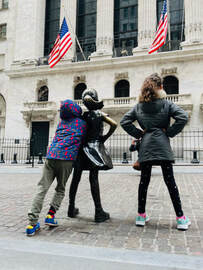 I’ve never been a particular fan of New York. I’ve visited the city a half dozen times, mostly for professional reasons, and I've always got the sense it's a frenetic place for those in ivory towers, and the overworked masses who support them. How does it go: Live in New York but leave before you become too hard, and live in LA but leave before you become too soft. New York tends to be city utterly swept up in the sense of its own self-importance. This is not the centre of the Earth (geographically that’s somewhere in Turkey). Being rude to strangers is not charming, it’s just being rude. Perhaps when I was in my twenties, I’d have more fire and energy to take on The Big Apple, a zest I’d exhausted in late 1990’s London (The Big Smoke). Age has now mellowed me, and nature holds infinitely more appeal than nightclubs or fancy restaurants. On this trip, I found the subways exhausting, the line-ups at the attractions intense, the people brusque. Times Square was a violent display of overwhelming advertising and grift. I certainly enjoyed visiting the Statue of Liberty and American Museum of Natural History with my kids. Both world-class attractions are transitioning from Covid protocols and were somewhat chaotic. We used a CityPASS which saved us a few bucks, and a company called TodayTix to get heavily discounted Broadway show tickets. I took the family to see The Play That Goes Wrong, which had all ages in stitches and was the perfect family-friendly live theatre experience, especially for kids who have never seen this level of professional theatre before. We caught a lovely sunny day at Central Park, and my daughter’s birthday present was a visit to the goopy Sloomoo Institute, which will get its own sloppy sticky story in due course. We stayed with relatives downtown, and as always, reconnecting with family proved to be the best highlight of all. It's been almost a decade since I visited Rio de Janeiro, presently emerging with the rest of Brazil from dark political days. Just about all my time would be spent with family in Copacabana, staying with my in-laws who live one block from one of the most famous beaches in the world. Heading into fall, the weather was spectacular: 30℃ blue skies, crashing waves, not a drop of rain in a month that could just as easily be a washout. Little stalls along the beach offer chairs, umbrellas, drinks and food, and with a caipirinha in hand I was content to watch the kids play in the waves while an endless stream of touts made the rounds offering everything from bolinho de bacalhau (cod fish cakes) to loud shirts and Bluetooth speakers. I don’t recall Copacabana being this clean, lovely and safe, especially in the evening. New waste treatment plants have made the water safe to swim in, tourism police and lifeguards patrol the shores, locals wear their teeny-weenie bathing suits, and you can happily spend all day doing nothing (the Brazilian way). The neighbourhood was also noticeably LGBTQ-friendly. My kids got to know some local characters, relished their acai bowls, street food, Brazilian family, shopping excursions and night markets (the Canadian dollar goes far here). 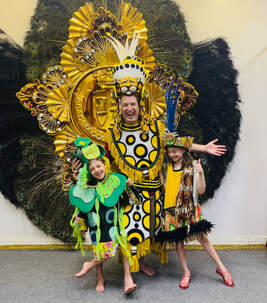 Of course, we still had time for the sensational views atop Sugar Loaf Mountain and the AquaRio, the largest aquarium in South America. We also took a braziliant tour called Carnaval Experience, taking us backstage at Samba City to learn about the city’s legendary festival. Staying relatively put – by my standards anyway – I was reminded of the months my family spent in Chiang Mai and Hoi An, which allowed us to get under the skin of a different place and culture. Like New York, the traffic and chaos of Rio can get a little much, but since my goals were modest, it was a joy to reconnect with our Brazilian family on these too-few, too-rare occasions, allowing the kids to immerse themselves in the culture of their mother’s heritage. Ipanema, Santa Theresa, Lapa, heck the rest of Brazil would have been fantastic. Maybe next time... or maybe I won’t get too far from the beach again. Either way, the friction of six airports, the white-knuckle taxis, the financial expense, the subways, the heat, the rain, the packing, the crowds, the jetlag…it’s all worth it, and it always is. A few years ago, my wife and I took our 4-year-old daughter and 18-month-old son on a 6-month adventure across Australia. We did this because I was writing two books about travel Down Under, and because we are insane. Since our hard-earned experience might be of use to other parents, I thought I'd share some of the practical sections from my bestselling Australian book: 75 Must-See Places to Take the Kids (before they don't want to go). It might save your soul and sanity, and no matter how old your kids are, will likely make you laugh. Food has always been a vital component of travel. Every meal is an opportunity to saviour new cuisines, sparking conversation and connection. It’s a special time to sit back, relax, and indulge. When you’re travelling with young children, forget all that.
The rule of thumb is that the more expensive the restaurant, the less likely your children will actually eat anything of nutritional value, and the more likely they will throw a full-tilt meltdown because their crayon isn’t the right shade of forest green. The formula of your typical family travel meal: Location: A small town restaurant with a fridge buzzing at an almost intolerable volume, but which the owners don’t seem to hear or mind. Air-conditioning a plus. Enter: Family of four, two kids under five. After walking around looking for somewhere to eat for twenty minutes, if you even suggest finding somewhere else, your partner will call a divorce lawyer, or possibly, a hit man. High Chair: Available in wood or plastic, with dried brown stains of mysterious culinary origin. Kids Menu: All major food groups represented, including fried chicken nuggets, fried fish, hamburgers, frozen pizza, grilled cheese sandwiches, and most importantly, chips. Apple juice is from concentrate and somehow contains both sugar and high-fructose corn syrup. Cost: Exactly one-third more than you’d expect to pay, but the kids’ meal comes with milk or apple juice, and that sounds healthy. Order: Nuggets for the one kid, grilled cheese sandwich for the other. Order placed immediately to get the kids fed as soon as possible. The Wait: Interminable. What are they doing, processing the fake cheese, looking for a bird to slaughter? Whines increase in volume and frequency until breaking point. Length of time used up for washing hands: Twenty minutes convincing your kid to do it, eight seconds when they actually do. Length of time used up for colouring books: Four minutes and twelve seconds, including one full minute of your two year-old chewing on the crayon before you notice. Length of time used up for reading books: Forty-five seconds. Length of time used up with apps on phone or tablet: No, don’t do it yet, wait until it gets really bad, or you need your hands to eat. The Food Pt 1: As your kids will gladly explain in high-pitched screams to everyone within the zoning district, they now want hamburgers and pizza, not chicken nuggets and grilled cheese sandwiches. No amount of cajoling convinces them otherwise, including threats of starvation, boarding school, or withholding stuffies at night - all of which amounts to more punishment for you than for them. Eventually you order the pizza and hamburger and realize that yet again, your partner and yourself will be dining on chicken nuggets and grilled cheese sandwiches. Reaction of Restaurant and Other Customers: A coin toss between heaven-sent patience (they have kids or grandkids) and barely contained annoyance (they don’t). The Food Pt 2: Ignored by both kids since by now they have raided the crackers and fruit you carry in the snack bag, and they are no longer hungry. On the plus side, they had a healthier lunch than the restaurant menu anyway, plus you can always bag their food for later, when it can be enjoyed cold and soggy, just the way no kid on Earth likes it. The Screen: OK, use it, do it, just get a few minutes to shove that terrible food into your face so you don’t become over-hungry and lose whatever patience you still cling to. The Bill: Never comes quick enough, always costs more, and always makes you question why restaurants don’t put carrots, crackers and apple on their menus because that’s all kids want to eat anyway – at least until they see that on a menu, in which case carrots, crackers and apples will become instantly toxic. Length of Ordeal: 30 to 45 minutes, during which time you can count on at least one potty break, one diaper change, one smashed toy, and possibly, a broken marriage. Remember: sit back, relax, and indulge in the cultural connections of new cuisines. There, isn’t that better? During our journey, we ambitiously took our kids to some wonderful restaurants, especially around Melbourne and Sydney’s Darling Harbour. It was our sincere hope we’d be able to expand our kids’ culinary horizons, allowing them to graduate to mild spices and unusual dishes. How proud I was when my daughter sampled crocodile, emu and kangaroo meats at the Adelaide Central Market (she drew her understandable limits at sampling citrus-nutty green ants from the Northern Territory). “This is dill-lish-shiss!” or a hearty “Mmmmmmm!” were not uncommon words out of her mouth. We definitely had memorable meals, although we often deployed the screen to keep the kids occupied long enough for all of us to enjoy it. Between eating in and eating out, it’s important to treat yourselves every once in a while and budget a little extra for good food. At the end of the day, good food keeps you healthy, if the kids are behaving, meals can indeed be the highlight of the day. Tip: We found food delivery services to be a family travel revelation, combining the ease of going out with the ease of staying in. Wherever possible, we preferred preparing our own meals in our holiday park cabins, Air Bnb’s and rental apartments. Even though we had to shop, cook and clean up, dinners are just simpler at home. We can feed the kids meals they’d actually eat, keep ourselves conveniently close to bathtubs, toys, paper towels, toilets, and TV shows on ABC Kids. Always on the move, we travelled with a box of condiments and staples, pickings up fresh produce wherever we went (our kids are constantly snacking on fruit and vegetables, which are abundant and excellent in Australia). Breakfasts are particularly important, and given our schedule, were often rushed. Cereal, smashed avocado toast, Uncle Toby’s porridge, Milo, eggs… and out the door.
Lunches were usually eaten out, hence the overflow of nuggets, sandwiches and chips, with pies coming to the rescue on more than one occasion. Home cooking have given our kids a taste for asparagus, broccoli, Brussels sprouts, mushrooms, and other vegetables I rejected as a child. Butter, lemon, salt and garlic pretty much saves the day with every veggie, along with olive oil and balsamic vinegar. Our kids love butter chicken, schnitzel, warm bread to dip into olive oil, hummus, and absolutely anything to do with cheese. Don’t they all? We didn’t always have time to prepare elaborate meals, but did have some go-to dishes, and pasta or rotisserie chicken available always in a pinch. There’s much to be said for the quality of packaged meats, chicken and salads available from supermarkets these days. In our household, Dad does the cooking, Mom does the baking, and everyone cleans up. There were occasional BBQ’s but unless you’re travelling with your own, they’re often a pain to clean up. If you need to make omelettes for dinner, do it. If you need to eat leftover chicken for breakfast, do it. Do whatever you need to, because any food in the belly pays dividends when you avoid hangry meltdowns in an hour or two. Bon voyage and bon appetit! I spent six months travelling across Australia to research my two books, The Great Australian Bucket List and 75 Places to Take the Kids (Before They Don't Want to Go). I'm often asked about highlights and tips, and so I'm delighted to share both below. Both books contain loads more experiences information, and are available on Australian bookshelves, or online. 1. Cradle Mountain, TAS Nature has a powerfully soothing effect on overexcited young kids. The fresh air and scenery of Cradle Mountain, coupled with nearby attractions like Devils@Cradle wildlife park, made this Tassie jewel a highlight of our journey. The Dove Lake Circuit, my nomination for Australia’s most beautiful walk, might prove a little challenging for the very little ones, but forest walks, lake swims, and campsite BBQ’s will make up for it. 2. Shark Bay, WA Both parents and kids were disappointed with the over-hyped dolphin feeding at Monkey Mia, but there were big smiles all round when sailing the turquoise waters of Shark Bay, spotting dugongs, dolphins, and a glorious sunset. Discovering Shell Beach, the Ocean Park Aquarium, Denham’s seaside playground, and the friendly locals that gather each evening inside the Shark Bay Inn proved just as successful. 3. Litchfield National Park, NT Two iconic national parks dominate the Top End, but Litchfield is far more accessible than Kakadu. A two-hour drive on the 130 km/hr highway from Darwin, Litchfield is also packed with natural attractions in close proximity. After gazing at the giant cathedral and magnetic termite mounds, we soaked up a memorable afternoon in the Buley Rockholes, where Nature has carved a series of refreshing pools and rock Jacuzzis. 4. Melbourne Zoo’s Roar n’ Snore, VIC Camping overnight in one of the world’s best urban zoos is wild. Driving into the zoo’s access gates after hours, it felt like we had entered Jurassic Park . Our friendly hosts gave us a fascinating behind-the-scenes tour, and after a tasty BBQ, we strolled around the grounds discovering just how active animals are at night (lions included). Waking to monkey howls and feeding giraffes all but guarantees a very happy camper. 5. Irukandji Shark and Ray Experience, NSW We did a lot of research scouring the country for unique experiences, but we also followed our noses. A simple signpost outside of Port Stephens led us to this friendly, family-run facility working hard to dispel fears and give visitors a hands-on encounter with various rays and sharks. Our two year-old wasn’t convinced when a large smooth ray gave us a wet hug, but was awed watching me hand feed a 3-metre-long Tawny Nurse shark. 6. Whitsundays, QLD “Best. Day. Ever!” My daughter screamed these three words many times on our journey, my just reward for braving her meltdowns, food quirks, and occasional projectile vomit. Fortunately, it was smooth sailing off Airlie Beach, hopping aboard a Cruise Whitsundays catamaran to snorkel, play beach cricket, and explore the squeaky pure sands of Whitehaven Beach. 7. Questacon National Science and Technology Centre, ACT We took the kids to fantastic museums around the country, and there were definite standouts: MONA in Hobart, the Melbourne Museum, National Gallery of Victoria, and the WA Maritime Museum in Fremantle. From the moment they encountered a thespian robot in the lobby of Canberra’s Questacon, my kids tuned into science through the museum’s outstanding interactive displays. 8. Oceanic Victor, SA Having braved Monarto Zoo’s innovative and unnerving Lions360 experience, I took my kids to Victor Harbour to get up close and personal with large blue-fin tuna. Built for educational and tourism purposes, this offshore holding pen is home to 80 prized tuna, blitzing about as we fed them sardines under the guidance of friendly marine biologists. Swimming with these speedy “Ferraris of the Ocean” is an unusual and delightful tick on the national bucket list. TIPS FOR TRAVELLING WITH YOUNG KIDS Flying:
Don’t overwhelm yourself with bringing too many toys on the plane, as you’ll just overwhelm yourself. A colouring book and device loaded with educational apps or their favourite Netflix shows (which can now be downloaded to tablets) will suffice. If your kid keeps licking seat trays that were last wiped down in the 1980’s, don’t worry. Ours survived and yours will too. Invest in durable over-ear headphones to fit small ears, and always carry easy-to-access snacks. Driving: Plan longer drives around nap times. Keep a barf bag or towel in easy reach. Get to know signs of car sickness, like moans and eye rolling, as a few minutes break here will always be preferable to a half hour clean-up there. Load up your phone with your kids’ favourite songs. Build in extra time for playgrounds to exhaust their energy along the way. Imagination games buy some time, as will devices (although it could also buy you motion sickness). Instead of playing Tetris with your luggage, consider renting a trailer. Hotels: Ask for extra towels and call in advance if you need a crib (we travelled with an sturdy yet ultralight crib from Melbourne’s Valco Baby). Bring a favourite stuffed toy and light blanket for each child to ensure consistency at night. Rooms higher up are less noisy. Download a white noise track for your phone or tablet to drown out noisy neighbours. Move all breakables out of reach, and push tables with sharp corners to the side. Remove what you can from the mini-bar to fill the fridge with milk and snacks (and avoid temptation). With playgrounds and swimming pools, Discovery Holiday Park cabins and self-catering Oaks apartment rentals served us better than traditional hotel rooms. Restaurants: Weathering the judgmental gaze of pre-digital and holier than thou parents, we faced a choice: employ the screen to enjoy our meal in relative peace and quiet, or forget the screen and risk food fights, tantrums, and spills. There will be plenty of opportunities for both, of course, and we usually start with colouring books and small toys before resorting to the device. Restaurants seem to think kids survive solely on chicken nuggets, fish and chips, and spaghetti. We often shared our healthier “adult” dishes, and ordered extra veggies on the side. You might also be a fan of the late author Douglas Adams, who wrote Hitchhikers Guide to the Galaxy, Dirk Gently’s Holistic Detective Agency and the genius dictionary of made-up words, the Meaning of Liff. In 1992, he wrote a book called Last Chance to See, a travelogue about his journey to visit animals on the verge of extinction. Although the book has dated (some rare creatures have now completely vanished), I’m struck at how ahead of his time Douglas Adams was. Not only did he give us the meaning of life (the number 42, in case you forgot), but he foresaw the sad reality that a modern bucket list is not so much about doing something before you die, but before it disappears. I write these words in the midst of a second unprecedented heat wave in a normally mild British Columbia summer. The first claimed over 500 lives in just three days, a staggering number that’s largely slipped under the flood of the 24-Covid news cycle. Meanwhile hundreds of wildfires are burning in the interior, smoking our skies sepia, evacuating thousands of people and torching the entire town of Lytton, a popular destination for river rafting. Scientists estimate over a billion marine animals cooked in the first heatwave, and more are undoubtably boiling in their shells this weekend as the temperature and humidex approach the mid 40°Cs. Climate change has come home to roost, and techno-evangelism (technology will save us!) suddenly rings a little hollow for Pacific Island nations soon be underwater, communities going up in flames, loved ones burying their dead or biodiversity battered by urban encroachment, poaching and agriculture. I know you come here for good news, but since I’m a pragmatic optimist, we have to accept that the near and far future will suffer increasingly extreme weather events, causing unparalleled environmental, financial and cultural devastation. All I can hope is that this finds you in a safe and stable nation with enough progressive foresight and resources to prepare for this eventuality. All I can hope is that my bucket list books do not become works of history – much like Last Chance to See - a review of destinations that also no longer exist. Unfortunately, not much has been gained in thirty years since Douglas Adams sounded his convincing warning bell, and so much has been lost. My new ‘Bucket Listed’ column for Canadian Geographic Travel combines commentary with my travel recommendations. Each column is short and punchy and well worth reading, especially my second column about Indigenous tourism. My joyous and poignant Celebration of Canada column was sunk by the sombre nature of this year’s Canada Day, which coincided with horrific discoveries of residential school graves, sparking outrage at the nation and Catholic church’s complicity in an obvious attempt at cultural genocide. It’s a heavy topic for non-Indigenous Canadians to grasp, which is why I highly recommend reading Peace Pipe Dreams: The Truth about Lies about Indians which uses a lighter touch to help us understand the many challenges and injustices that Indigenous communities face today. Next, I explored risk tolerance with a column entitled: Is it Safe to Travel Again? before jumping into practical tips for planning bucket list road trips and revealing some of my favourite, less-known experiences in every province. Speaking of road-trips, I recently returned from a little adventure of Vancouver Island with the kids, ticking off some must-do experiences along the way. The new Malahat Skywalk was spectacular, with a few unexpected offerings (like a slide, boardwalk and adventure net) to elevate the experience well above just another roadside attraction. I’ve long heard about caving on Vancouver Island, so I’m a little shocked it took me so long to get to the Horne Lake Caves. I just assumed they were typical show-caves, but it’s more aligned with my best spelunking adventures abroad: hardhats, overalls, scrambling, twisting, ducking and climbing. Letting the kids hammer away for fossils under the guidance of an enthusiastic and experienced dinosaur museum curator was a stroke of genius, and we finished off at a fun camping festival in a forest near Courtenay. After 60 days of no rain, the heavens opened up and drowned us with the heaviest rainfall in years, soaking the thirsty fields and farms, and maintaining my 85% record of a mud-soaked fiesta whenever I camp at a festival. The Canadian government should just drop me off with a tent, a band and a DJ in the country’s most drought-impacted regions: statistical probability will take care of the rest. You can read about my Vancouver Island road-trip in my latest post on the newly relaunched www.canadianbucketlist.com Finally, I want to give a shout-out to the team at Great Canadian Trails, who are also passionate about remarkable Canadian outdoor adventures. You don’t need to be a hardcore backcountry explorer, cyclist, hiker, or paddler to experience the joys of a true bucket list adventure. GCT offer guided and self-guided tours that take care of all the logistics and make these kind of adventures far more achievable, accessible and enjoyable than you’d ever expect. We’ve been working together for years, they’re great people, and I’m thrilled they’ve managed to endure the challenges of Covid to emerge even more determined to help me build your lifetime highlight reel.
This month sees the publication of my 9th and probably most personal book, 75 Must See Places to Take the Kids (before they don’t want to go). You see, while living and writing The Great Australian Bucket List, I was also travelling with my wife and two kids, aged 2 and 5, writing and researching this one. But family travel, I was learning, is an entirely different beast. We discovered some truly incredible wonders for all ages, gathered priceless memories, and also learned a thing or two. To celebrate the launch of this beautiful, funny, inspiring and honest new book, here’s some of that hard-fought wisdom for parents of young kids, and the people and family who support them. It works for Australia, but it works for everywhere else too.
With due respect, any Mom or Dad who claims to have family travel figured out is delusional, likely fibbing, or paying someone a lot of money to look after their kids. The truth is: young kids do not give a flying crap about your best laid plans and intentions. Rather, they’ll make a crap while you’re flying (probably an explosive one, the kind that just violates a diaper). Children under the age of five are frequently erratic, inefficient, agitated, annoying, moody, and instinctively know how to push your buttons. And this is before you take them on a stressful journey. Of course, you love them more than anything in the world, and there are moments of such tenderness, magic and wonder it makes all other forms of travel – backpacking, honeymooning, grey nomading – pale. But you will work for those moments, and pay for them in blood, sweat, tears and dollars. Don’t let anyone tell you otherwise.
If there’s strategy, we tried it. Not letting the kids nap so they’ll sleep on the plane (they didn’t). Letting them nap so they’d be rested (they weren’t). Buying books, loading up devices, crayons for colouring in…the reality is that some flights are terrible, and some flights are not. Overwhelmingly, we found Jetstar’s crew to be sympathetic and helpful. Fellow passengers meanwhile could be broken down into several categories: a) We’ve been there and Thank God we’re not there any more b) How dare you bring your snotty kids on this plane and ruin my flight c) I’m right there with you and we’d chat but my kid is eating the tray that was last wiped down in 1997 …and d) Every cent I invested in these noise cancelling headphones was worth it. Never will time tick more slowly than when you find yourself on a plane with your screaming, inconsolable, jetlagged and overtired infant and toddler. The best thing that can be said for flying is that it eventually ends, you will land in your destination, it beats spending all those hours in a car, and with devices, flying today is very much easier than it used to be.
We drove almost 20,000 kilometres during our trip, and it definitely helped that we were in a comfortable Ford Everest. With direction from my toddler, I curated a playlist of 100 songs I knew my kids would enjoy, and adults might be able to stomach on endless repeat. We learned that snacks must be instantly accessible, along with wipes, and towels for sudden eruptions of projectile vomit on winding roads (watch for seismic clues like the kids being too quiet, moaning, or turning sepia). Good car seats are essential (we went with Britax) with the advantage of the kids being strapped in. Sometimes strapping them in was an easy process, and sometimes we’d lean in too close to fasten a buckle and get the open-handed slap to the face. Don’t blame the kid, you’re a sitting duck. GPS definitely takes the sting out of getting lost and provides some indication on how long the journey will take, not that this will stop the endless barrage of “Are We There Yet?” Road games help, especially for the older kids. Drugs occasionally help, especially for parents.
The restaurants of Australia seem convinced that the most important food groups for every growing child are chicken nuggets and chips, pizza, mac and cheese, fish and chips, chicken nuggets served with mac and cheese, and pizza served with fish and chips. Basically, all the essential minerals and vitamins one can get. Of course, any time we ordered something that wasn’t from the Kids Menu, the kids would take one bite, and the bill would take a bigger bite. This is why we did a lot of cooking wherever we stayed, which not only saved us money, it also saved our sanity.
Before you depart, resign yourself to the fact that you’re going to pack far more than you need. Imagining every conceivable scenario, you simply can’t help yourself. What if it gets unseasonably hot, cold, wet, dry, or buggy? If it does, you can deal with it with a quick visit to the store, mall or market. Our kids outgrew their shoes twice in 10 months. For almost a year, their wardrobe consisted of a small suitcase that seemed to refresh its garments along the way, when the holes and stains and smells overwhelmed the clothing’s usefulness. Even with a limited selection, our five year old would have meltdowns over her fashion choices, with a favourite dress or shirt cast out from one day to the next. Your best bet is to pack a travel uniform of sorts, with the same garment combo in multiples. Good luck with that.
Self-catering cabins at holiday parks (we had wonderful stays with Discovery Holiday Parks) and two bedroom apartment rentals (we stuck with Oaks Hotels) served us much better than a traditional hotel room. Kids need the space, you need the kitchen, and holiday parks come with jumping pillows, pools, playgrounds, and most importantly, other kids for yours to play with. We used an ultra-light, easy-to-assemble travel crib from Valco Baby which ensured our two year old had consistency. He’s a good sleeper, but our five year-old frequently ended up in our bed, and I frequently ended up in her bed, a sofa, and one time, on the floor in the closet. You do what you got to do. Kids thrive on routine, and travel is all about shaking that routine up. Everyone has to give or take to make it work on the road. By everyone, I refer to parents giving up everything, and the kids taking as much as they can.
I’ve written several “bucket list” books that investigate unique experiences, and I’ve built my career as a writer who chases the extraordinary, a Connoisseur of Fine Experiences. You can visit a beach, wildlife park, waterpark, or museum anywhere, so I had to dig a little deeper for activities that could include my kids. Stuff like standing beneath a snarling lion inside a cage or hand feeding Bluefin tuna in South Australia. Stuff like swimming with baby crocs or in natural jacuzzis (NT), being inside a glass box hanging off a building or panning for gold (VIC), kayaking off Fraser Island or feasting in a shipping container food market (QLD), sailing with dugongs and chasing quokkas (WA), petting stingrays and braving the world’s steepest railcar (NSW) and jumping on modern art and staring down ferocious devils (TAS). Of course, the kids loved the beaches (the Whitsundays, Bondi, Byron Bay), the wildlife parks (Caversham in WA, Cleland in SA, Wildlife Habitat in QLD, the Melbourne Zoo), the museums (Scienceworks and the Melbourne Museum in VIC, Questacon in ACT, the Maritime Museum in Perth) and waterparks (most of the Discovery Holiday Parks we stayed in, the Oaks Oasis). But most of all, they loved ice cream. Because in the end, it didn’t matter what incredible activity or destination we ticked off, the best part was just being together, spending quality time as a family that we’ll always look back on with joy, wonder, and inspiration. Despite the challenges – the meltdowns, the pukes, the frenetic meals, lack of sleep, intense drives – my family managed to breathe deep, laugh, play, capture memories we might only appreciate later, and celebrate the incredible Australian opportunities that came our way. You can buy 75 Must-See Places To Take The Kids at most bookshops in Australia and New Zealand, including online at Booktopia and Dymocks, and through Book Depository anywhere in the world.
You can really get a sense of place by its name. Take Istanbul, Timbuktu, or even Bird Island (where I write these words, off the coast of Cape Breton, Nova Scotia). Revelstoke, the BC transport hub on the way from Vancouver to Banff, certainly has a name better than most. A town that lets you revel in the stoke? Come on, a high-priced brand agency couldn’t have come up with something that good. The town, population 15,000, got its name from one Lord Revelstoke, an English industrialist who rescued the Canadian Pacific Railway from bankruptcy in 1885. In the shadow of the Selkirk Mountains, sandwiched by the mountainous beauty of Glacier and Mount Revelstoke National Parks, the town also boasts a ski resort with the greatest vertical descent of any ski resort on the continent. Fun for another time. We’re here for a family roadtrip in summer, driving six hours up from Vancouver to explore local activities for all ages, including another tick on my ever-expanding Canadian Bucket List. An Old Lady Lived in a Shoe in an Enchanted Forest
After crossing dramatic mountain passes and driving alongside large, scenic lakes, we pull off the Trans Canada Highway to explore The Enchanted Forest and adjacent Skytrek Adventure Park. With various high ropes courses through the tall forest trees, the latter is catnip for kids and adults channelling their inner gibbon. The former is eccentric and certainly bizarre. Dozens of tiny and not so tiny fairy tale houses have been built on the forest floor, complete with a castle, a giant climbing a tree, mermaids, wooden horses, and mischievous forest elves. A passion project that has been a popular, quirky roadside attraction for half a century, my young kids embraced Enchanted Forest with sheer, unadulterated delight. Happy kids, happy parents, and happier still that both these attractions are less than a half hour’s drive from downtown Revelstoke, where our room at the Regent Hotel awaits. A town that straddles the industries of railway, forestry and tourism, Revelstoke is refreshingly devoid of glitzy retail brands, and oozes small town charm. It is protected from being overrun by its relative isolation from a major city, resulting in the kind of place where locals greet each other at free nightly summer music concerts in Grizzly Plaza, or at the weekend street market bursting with local flavours. Our outstanding meals at Taco Club, Nico’s Pizza, Paramjit’s Kitchen and the exceptional Quartermaster offered funky, homely and fine dining, while a visit to the Aquatic Centre (a must for young kids) made me pine for something similarly inexpensive and less crowded in Vancouver. Toasting outstanding craft beer at Rumpus Beer Co, I admired the moxie of the husband-wife owners chasing their small town dream, and wondered, along with many others I imagine, if Revelstoke is the kind of place where I could chase a dream too. A real sense of community permeates the town, a community that doesn’t mind living ten minutes down the road from a world class ski resort, or two and half hours from Kelowna, the nearest regional airport. The Pipe Mountain Coaster Revelstoke Mountain Resort is famous for the highest vertical run on the continent, but is embracing its four season possibilities. This means world-class mountain biking, and for my bucket list, the longest alpine rollercoaster in Canada. Taking the gondola up to mid-mountain, my family soaked in the stellar mountain views and fanning Columbia River, before hopping into yellow go-cart like contraption connected on a narrow single rail. My wife and I each put a kid in our laps and strapped in for a thrilling 1.4 kilometre descent. The Pipe Mountain Coaster twists, curves and whoops its way 279 metres down the mountain, through forest and breathless dips at speeds of up to 42 km/hr. A simple mechanism allows us to brake and go at our own pace, and most first timers will take it easy. Get the three-ride pass (or more) and you’ll soon dispense with the brakes altogether, hitting the hell-yeah! controlled maximum speed that ensures it’s safe and fun for the whole family. “Faster Daddy!” yelled my daughter, and who am I to argue? Paddle at the Rumpus Beer Company Feet away from the exit point of the coaster is newly opened Aerial Adventure Park, where you can easily spend two hours navigating fifty different balance and height obstacles, rising four stories above the ground. Graded like ski runs into green, blue and black difficulties, climbers are safely harnessed throughout the entire contraption. Watching brave little kids take on swinging rings or a knee-shaking four-story jump should add some pep to your steps. Fortunately, great food and craft beer awaits the victorious in the village regardless (and for the kids, ice-cream). A Pirate Battle River rafting is another popular summer activity in Revelstoke, with various companies offering grade three runs. For younger kids, consider Wild Blue Yonder’s River Pirates Tour, complete with pirate costumes, face paint, bush battles and fun tales of yaargh! Downriver from the impressive hydro dam, we drifted on the glass mirror of the Columbia River, listening to Captain Jack’s brogue as he recounted the myth of the man-eating moose. My daughter - made-up with face paint, bandanna’d, and now known as Jolly Lips Sue - had a blast. Nobody got wet, and foam sword battles continued back in our comfortable family suite at the Regent. Here comes the train! Fortunately the sword stayed behind when we checked out the old world Railway Museum, although the knives came out when my three year-old had his thermonuclear meltdown when we told him it was time to leave the large, warm wading pool at the Aquatic Centre. We packed a lot into just three days, and could have easily spent a week exploring this underrated wonder of the BC interior. It’s all right there in the very name of the town, where families can revel in the stoke of it.
Our 4 months living in Southeast Asia can be broken down into 5 parts:
Thailand was a great start. We jumped into the deep end of digital nomadism, swimming in an exotic culture, and enjoying a slower pace after the frenetic pace of Australia. Bangkok was a sort of purgatory as we waited to visit Bali. Bali was like an overharvested cornfield, a deep disappointment sprinkled with tasty moments. How desperately we needed Hoi An to be different, to be the anti-Bali, to deliver on the promise of why we chose to visit Asia in the first place. And how relieved I am, five weeks later as write these words on the plane back to Melbourne, to reflect that Hoi An delivered. Everything clicked. The warmth of the locals was sincere and inspiring. The food was fantastic. The facilities we found were top-notch. The friends we made were lovely. The house we lived in was the best of any we’d stayed in, the water buffalo abundant, the excursions fun. And most of all, the timing was perfect. Wet season along the central coast of Vietnam officially starts September 1st, the day of our arrival. But the rains only came October 1st, four days before our departure. What September did was dampen the interest of high-season hordes. Hoi An’s lantern-lit night markets, ancient storefronts and coastal attractions were busy, but never overcrowded and unmanageable. It also meant that the locals were even friendlier, flashing their gentle smiles and gifting the kids lollipops. Da Nang, the city that services Hoi An (located 45 minutes drive away along a quiet four lane highway) is exploding. It’s got a lovely long white sandy coastline with resorts and apartments starting to encroach. “This is probably what Rio looked like in the 1960’s,” says Ana. Given its turbulent history, communist Vietnam has embraced modern tourism with a fever, attracting bus loads of Chinese and Korean tourists with mega-resorts sprouting all along the coast, edging closer and closer to Hoi An’s old city. The Four Seasons, the Intercontinental, the Sheraton – it’s all coming in thick and fast, and it’s going to change everything, indeed, it’s already changing everything. The Canadian owner of Dingo Deli – one of our favourite hangouts with its great food and play area for the kids – tells us he was one of the first European families in Hoi An, when the inbound artery of Cua Dao was still a dirt road. This was less than a decade ago. Today, coffee shops and restaurants and tour operators and ubiquitous tailor shops and ATM’s and opulent-looking boutique hotels and mini marts line the paved roads to the Ancient City. In a decade, Hoi An could well become another Bali. And while it felt like we missed the boat with Bali – which must have been incredible a couple decades ago, at least we discovered Hoi An when the going was good. When we could walk beneath the colourful lanterns, scooter through rice paddies, lie in hammocks under coconut trees, shop in busy local markets, and drink strong coffee on the patios. The kids might remember key moments from the photographs that captured our stay, but we’ll remember the general feeling of cultural bliss, contentment, and adventure. Without doubt Hoi An proved to be the highlight of our Big Year, and one we’ll always remember with great fondness. With the pace of modern tourism and the explosive growth of the mass Asian market, going back would probably be heart breaking. I’d never been to Vietnam, and now I deeply regret not putting it into my Modern Gonzo itinerary 13 years ago. It was a different country back then, just emerging from decades of Communist isolation. I’d heard a mixed bag of backpacker’s opinions: some complained they were ripped off every two minutes and hated it. Others said the people were lovely and it was their highlight of SE Asia. And now, so many years later, I heard the same stories, which illuminated the discrepancy. It appears the the big overcrowded cities are intense, and travellers feel preyed upon. Ho Chi Minh (aka Saigon) and Hanoi sound like places far removed from the reggae music, siestas and watermelon shakes we found in Hoi An. It is a small town that repeatedly came up in conversations with friends about places they loved most, and wished they could have stayed longer. Chiang Mai was the other one, and so no surprise we ended up in both. My knowledge of Vietnam, like so many 80s kids growing up in the age of ‘Nam movies, is pretty tainted by the Vietnam War, or what the Vietnamese call the American War. All that’s in the past. Heck, it seems that Communism is in the past, the Vietnamese taking their cue from China – the powerful neighbour that has played a huge influence on Vietnamese culture for millennia – embracing capitalism within the confines of a one-party state. Tourism is embraced and protected. After somehow talking my way out of corrupt police roadblocks in Bali and Thailand, I do not recall any police presence at all during five weeks in Hoi An. Gem’s Rider, where I rented our 130cc Yamaha Nuevo scooter, wanted to keep my drivers license as collateral. “But what about police and roadblocks?” I ask. “Oh, they’d never bother any tourists,” was the reply. Everything here appeared peaceful, the roads were clean, people got about their business (working 7 days a week, I should add). More than once I walked into a store during the hot mid-day siesta to find it abandoned, the products unattended and inviting theft from anyone off the street. It’s why we stopped locking the front gate. If locals are unbothered by petty crime, why should we be? The only relics from the war were the stories we heard from an Israeli we met who was disarming bombs in the countryside for an NGO – “more bombs were dropped on Vietnam than were used in the entire World War II” – and an underwater mortar shell that Ana saw in the bay when she was doing her diving certification. It continued to amaze me that these peaceful, gentle people inflicted a military defeat on the United States superpower, and then swiftly invaded Cambodia to unseat the horrific Khmer Rouge, and then held off an attack from China. The Vietnamese are strong yet peaceful, gentle but unbelievably proud. We Air Bnb’d a house located over the bridge from the Ba Le Market off Cua Dai, in a neighbourhood served by narrow alleyways that can barely squeeze a car. Next door to us was a small holding with banana and coconut trees, and across the road was a modest yellow temple on the shores of a large river. The house was called Mali One, consisting of 4 bedrooms and 4 bathrooms, two upstairs and two downstairs, typically rented individually. We took the whole place, giving Amy her own space and a different area for Raquel’s home-schooling. With temperatures ranging between 28C – 35C, air-conditioners in each bedroom were essential for sleep, and fans aerated the muggy air in the living areas. The shower pressure was great, , we could flush toilet paper, and brush our teeth with tap water. There were roosters next door and across the street, but their crows didn’t destroy us like they did in Chiang Mai. Dozens of geckos patrolled the walls, and fortunately we’d missed the brunt of mosquito season. A giant spider hung out downstairs by the front door, but we pretended not to notice it. On our first morning, discovering the Dingo Deli by chance, we met a Canadian family temporary living in Hoi An with their two daughters, the same age as Raquel and Galileo. We got to know Meredith and Jonathan, Charlotte and Aria well over the next 5 weeks, and shared the joys and challenges that come with schlepping your family around the world. They introduced us to Kahunas – a friendly backpacker’s beach club that welcomed families to swim in their pool and use their beach chairs. No $50 entry fee, no Bali exclusiveness. Having broken in our scooter skills, we could pile onto the long backseat of the Yamaha and cruise the relatively calm streets of Hoi An and its surrounds. Vietnamese scooter driving is as insane, probably more so, than in Bali. Bikes come from every direction, at any time. People bike on the wrong side of the road or on the pavements, using lights when they feel like it, carrying washing machines or mirrors or other bikes on their bikes, honking repeatedly and unnervingly. We saw a couple accidents, and drunk people who could barely stand much less pilot a bike. One hapless duo as so hammered on their bike they literally fell over in the middle of the street. The difference with Bali’s madness is that there was a lot less traffic. Outside of the hectic 4pm to 5pm school hour, the roads were generally calm and the highways basically empty. Ana and I took the bike on a roadtrip to the Hai Van Pass, cruising over mountains and through some of the busier traffic areas in Da Nang. As crazy as the riding and traffic was, it never felt nearly as dangerous and as desperate as in Bali. As a bonus, concrete paths created shortcuts through the green rice paddies that surrounded Hoi An, showcasing water buffalo and farmers in pointy hats accompanied by wonderful feelings of exoticness and travel buzz. I never wore a helmet, and have confirmed that riding a scooter with the warm tropical wind in my hair is as close to nirvana as I can be, more-so when I feel Raquel hugging me at the back, and have Gali holding onto the antennae-like mirror stands in the front. Speeding along the the “water buffalo road” to Kahunas, and zipping about the rice paddies on the bike, comprise my singular best moments of the entire year abroad. Just about every morning I would pop on the bike and ride around the corner – slowly across the road that became more and more flooded – to the Ba Le market. Fresh bananas, mangoes, dragon fruit, watermelon…I’d have to haggle but at 17,000 dong to one Canadian dollar, it was always a bargain. Some ladies ripped me off more than others, my favourite was Miss Huey, who always added a handful of fresh mint, spring onions, basil and other herbs the Vietnamese add to the soups, noodles and sandwiches. Across the road was the white house bakery, where I could buy fresh baguettes and breads, and a little further down, the Hoi An version of Bali’s Everything Shop, although it wasn’t very big and certainly didn't have everything. There were no supermarkets in Hoi An, no 7-11s, no Cocomarts or Pepito Express – and the two stores that sold groceries left no doubt that it was cheaper and a lot easier to just eat out. Meals would cost between 30K – 130K, depending on the type of restaurant, and unlike Thailand or Bali, there were plenty of affordable Western options. Raquel liked her freshly squeezed lime juice, Gali his watermelon juice, and every day the kids would have their Yakult and Milo drinks, along with homemade ice lollies from juice. We made our own smoothies, and although I cooked schnitzel a couple times, we got a lot of take-aways from one-person kitchen restaurants nearby. Visitors to Hoi An typically come for about 2-3 days, rent a bike to cycle in the rice paddies, visit the lantern-lit Ancient Town, check out a few temples perhaps, and pop into a tailor to get a suit, dress or shirt made. Every Friday we’d go to the Chabad – always the only non-Israelis – and those we spoke to were amazed we were actually living in Hoi An. “But what is there to do here?” they’d ask, and we’d say, “not much, which is why we love it.” After having done so much this year, the opportunity to spend days by a luke-warm pool drinking Larue, Saigon or Tiger beer sold cheaper than bottled water while the kids play with new friends to the tunes of vintage reggae is as close to paradise as we can hope for. Of course we got the suits and dress made, it’s the thing to do here, and you’ll struggle to find bespoke tailoring cheaper. On the advice of someone from the Hoi An Expats Facebook group, we ended up at Cloth Shop Sue, where I got a suit, a blazer, 4 shirts and 3 waistcoats, and Ana got a suit, dress, and pants. Shipping wasn’t too expensive, so we sent 26kg of clothes, souvenirs, books, and other stuff we’re trired of schlepping around home to Canada via sea. Hopefully it arrives! In our home was a 2002 copy of Lonely Planet Vietnam, and the country it describes is very different from the Vietnam 16 years later. Hoi An is described as a small but popular town famous for its temples - we only visited one of them, by accident. Our two sojourns were me taking Raquel on the bike to the Marble Mountains, a series of limestone outcrops overlooking flat Da Nang. We took the elevator up to the top and visited a couple cave temples, sweating bullets in the process. After riding 90 km;/hr with Raquel, I’m more confident than ever to get a motorbike! Our second adventure was to the Ba Na Hills, a bizarre kitschy French medieval-style theme park built high in the mountains, and serviced by cable cars. It was expensive and took a while to get to, but the admission price included all the rides, and they’d recently unveiled a stunning “hand” bridge that made world news when it was unveiled a few months before we got there. We went to see a water puppet show, which was quite fascinating, visited Cham Island, which was less so. Amy took the kids on a small traditional boat that looks like a saucer, after which they made stuff with coconut fronds. We visited the Ancient Town a couple times, took the boat on the Ancient Town to let the kids make a wish as they released a floating candle-lantern. We hit pub night where we didn’t fare particularly well but did win a pitcher of beer, and followed that up by a visit to the Dive Bar, which wasn’t a dive bar at all, and watched Jonathan support the local nitrous oxide balloon dealer. With booze this cheap, tourists were more than happy to buy rounds for everyone. For Ana’s birthday, Amy looked after the kids while Ana and I spent the night in a fancy hotel, having dinner and dancing to a samba band (yes, a samba band!) at a place called Soul Kitchen in An Bang. From the layabout couches to the kid-friendly restaurants on the beach, there was just so much to love here. Raquel even took ballet classes on Saturday mornings, with an English teacher who knew what she was doing (in stark contrast to Bali). The expat community heard about us and it’s a small circle – the folks with young kids living in a small town in a strange country. Otherwise, no lost boys in caves or tragic earthquakes, although the ceremonial president of Vietnam did die, not that we (or the rest of the world) heard much about it. A typical day looked like this: 6am - 8am: Wake up, make breakfast, hear about Amy’s evening exploits with the South Africans living in Hoi An teaching English to Chinese students online. 10am – 2pm: Kahunas or playdate 2pm – 4pm: Gali naps, Raquel does school with Miss Amy downstairs, Robin works in Australian Bucket List website/Ana explores/get PADI certified/rides around looking for baguettes. 4pm – 6pm: Kahunas or playdate with Charlotte or bike ride to the water buffalo or or some such thing. 6pm – 8pm: Dinner, shower and bed time. 9pm – 11pm: Monopoly Deal or Netflix or Pub Quiz or Girls Night Out or Book Reading or Sleep. Other memories: The Koi Café, the karaoke clubs, the weddings, the trips to the one ATM machine where you could withdraw 5m dong. The inflatable pool on our upstairs patio, emptying the water over the sides into the banana trees. Rosh Hashana and Yom Kippur, the Chabad eggplant, hunting for diapers, hunting for new shoes for Gali. The challenging Wednesday night Pub Quiz (the most populous mammal on Earth is not humans!), the Birthday night away in a real hotel and dancing to Samba at Soul Kitchen, the horrendous sound of river frogs, the power failures, the horrendous sound of Vietnamese karaoke, the insanely strong coffee, the kids doing this, the kids doing that… It’s all a blur, and time does fly when you’re having fun. Unlike Bali, where the highlights were crisp because they were fewer and far between, days in Hoi An blended into each other the way we blended the market fruit into smoothies. At the the end of it, when Amy looked after all four kids and we hit the town with Jonathan and Meredith - four parents of four young kids bewildered to have some fun time to ourselves - we realized we’d be sad to say goodbye, and yet if you don’t, months will blend in the same sort of motion blur. It’s just hard to get much done when the going is this good, and it’s the closest we’ve had to a family holiday since we took the kids to Maui in April 2017. For despite what people think, just because you’re travelling, it doesn’t mean you’re on vacation. At least, until you find yourself in a place like Hoi An, the kind of place travellers visit for a few days and end up staying for a few weeks, the kind of place that vindicates your wild, crazy, irresponsible and risky decision to go travelling for a year in the first place.
After so many miles, misadventures and meat pies, I'm delighted to be launching my 9th book, The Great Australian Bucket List , available October 9th online and in bookshops throughout Australia and New Zealand. It's been a very long and very wild ride, packing in years of travel into six crazy months, and years of writing into the same. As for bringing along my family, two kids under five can only make the intense travel and writing easier right? Right. As with my previous books, I believe that essay-style stories inspire, and are best read on a printed page illustrated with beautiful photography. But I believe that practical information is important too, best accessed online where it can be easily and frequently updated. The Great Australian Bucket List follows this successful formula: a stunning, inspiring book supported by an extensive companion website - www.aussiebucketlist.com With any luck, both will have the same impact in Australia as the The Great Canadian Bucket List had in Canada: inspiring millions of locals and visitors to explore unique, one-of-a-kind destinations and activities around the nation (and becoming a smash bestseller as a result). From jungle surfing in the world's oldest rainforest to swimming with giant tuna, chasing ghosts in haunted prison cells to hiking the remote outback, Australia has buckets of amazing stuff to explore. Here's a quick peek at what I got up to: The book is published by Affirm Press, the fastest growing publisher in Australia, driven by passionate readers who believe in stories as much as I do. I have to give a shout out to my amazing sponsors and partners: Presenting Partner Ford Motors Australia, Oaks Hotels and Resorts, Jetstar Airways, World Expeditions, Journey Beyond, Discovery Holiday Parks, Move Yourself, Sunshades Eyewear, Tourism Tasmania and Queensland Tourism and Events. Thank you! The family travel project was an entirely different trip altogether. You can check it out at the online trip journal we custom-designed to record the adventure: www.esrockingkids.com. Along with our partners above, special thanks to Valco Baby, Keen, Footwear, Britax and Victorinox. I met so many wonderful people on my journey, and as always, the people I met (and the family I travelled with) shaped my experience. I learned so much about Australia, and myself. This is what travel does: new places stoke new emotions, new people stoke new ideas, new landscapes inspire new life stories. There's no word as yet if/when The Great Australian Bucket List will be available on shelves outside of Australia and New Zealand. I'd love nothing more than my Canadian, Global and Australian books to find their way to stores worldwide, but that's up to the gods, agents, and the publishing industry. In the meantime, you can buy it online anywhere through Book Depository (with free shipping worldwide) and in Australia online through Booktopia, Dymocks, Collins, Big W, KMart, Newslink, QBD or fine indie bookstores. As always, it's the perfect gift for everyone from kids to grandparents, and will appeal to all ages and interests. Thanks as ever for the support, and may your travels continue to be rich and fruitful.
Robin Should you take your young kids to Bali? Like so many other factors when it comes to travel, much depends on the nature and ages of your kids, your time, resources, interests, and what you hope to get out of the journey. This post explores some of the options available to young families in Bali, discovering some amazing destinations and activities, but some challenges too. I hope you find it useful. The Resort Experience. Bali is a beach-and-coconut-tree escape, the chance to relax and recuperate during the holidays. Dozens of island resorts are designed and catered for visitors to drop’n’flop, and we sampled one of the better ones, the Hotel Nikko in Benoa Beach. Airy and relaxed even in high season, the resort makes life a little easier for young families with spacious family suites (think tall bunk beds and rubber ducks in the oversize tub); an inclusive kids program with toys, books and more importantly, staff to look after the kids; family-sharing options on the menu at their outstanding Bali Luna restaurant; inclusive buffet breakfasts; and of course, a terrific pool and white sand beachfront. This is all young kids need really – sun, sand and freshly squeezed juice! Raquel beamed when I raced her along the coastline on a jetski, taking advantage of the discounted watersport rates offered for hotel guests. There was even a family spa– easily a highlight on our Asia adventure – in which Ana and I got a gentle Balinese massage while Raquel got her nails painted, and Galileo was head-massaged into a blissful slumber. The day culminated with a sensational outdoor bubble bath, and later that evening, dancing to the songs in the piano bar off the lobby. We didn’t want to leave the Hotel Nikko, which would be just as well, given Bali’s transportation challenges. The Transportation Woes I have never seen traffic anywhere as snarled, choked and unpleasant as Bali’s Uluwatu Road in the late afternoon. I’ve never seen taxi drivers as unscrupulous as those preying on tourists in high season Bali. A simple drive to Ubud 46 kilometres away took us over 3 hours. A simple drive to the airport 9 kilometres away from our place in Jimbaran took nearly 90 minutes. Even with GrabTaxi (SE Asia’s Uber equivalent) and a similar local service called Go-Jek, drivers frequently tried to double or triple the agreed-upon price in the app, and randomly cancelled rides if something better popped us, leaving us stranded. Winding narrow back roads and some terrifying driving all but ensured at least one kid would throw up in the car. Taxi drivers physically accosted us on arrival at the airport – definitely arrange a driver to avoid this – and some Grab drivers told us that the taxi mafia physically threaten them or in some cases have beaten them up. It’s horrendous and an unpleasant symptom of overtourism. Unless we braved the roads on our scooter with both two kids, going anywhere proved to be an immense challenge in terms of patience and nerves. By the end of our month-long stay, you could have offered us the world up north and we would have gladly declined to avoid the frustration of getting there. If Bali were a resort bubble island, this would be OK, but there’s so much to see and do and so much culture to explore. I suggest you pace yourself with the activities, keep it local, budget extra extra time to get around, and keep a towel handy if your little ones turn green in the backseat. Note: Bali’s roads are notorious and scooter accidents are all too common. It is not uncommon to see tourists hobbling on crutches and wrapped in bandages. Insurance is rare and expensive for bikes, more than double what we paid for the bike itself. We picked up helmets for the kids, and my comfort level and experience riding gave me confidence to explore the island with them on the scooter. I do not recommend anyone doing the same without knowing and accepting the risks. The Culture Balinese art and sculpture is extraordinary. Huge statues of Hindu folklore greet visitors at intersections, temples are built of polished black volcanic stone, ceilings and doors are painstakingly crafted out of wood with incredible attention to detail. Easily the most jaw-dropping of all is the 121-metre high statue that towers over the Garuda Wisnu Kencana Cultural Park, transforming the skyline of south Bali. The world’s second tallest statue took three decades to complete, and fortuitously we arrived at its unveiling. On scooter, I discovered back roads to get up close, and took the kids to the opening night party to see hundreds of performers entertain dignitaries beneath giant bronze statues of Garuda and Vishnu, and between looming cliffs carved from limestone. Even though the heavens opened up with a torrential downpour, the bright costumes and passionate dances were sensational. The Balinese beamed their wide smiles at the kids, sweeping them up and tussling their curly hair. We’ve found our young kids get treated like royalty in Asia, and Bali was no different. Locals were fascinated with Raquel’s corkscrew locks, and Gali’s naughty smiles. We braved the Transportation Woes of Uluwatu Street to get to the namesake temple, perched on a dramatic cliff overlooking waves smashing into the coast. Somehow navigating the chaos of crowds that gather here each sunset, we got tickets for the famous kecak dance – inspiring me ever since I saw the film Baraka – and a spirited performance of Hindu folklore. It would have been a perfect evening if we could have got home without the taxi saga (this one drove off with our stroller and never returned it). One more reason to have your own driver, if you can afford it. On scooter, Raquel and I stumbled into stunning temples, explored Nusa Dua and Seminyak, while Ana and I visited a fantastic art museum in Ubud. Still, the statue of a golden-crowned Vishnu riding the mythical eagle-like Garuda will stay with us forever, a symbol of Bali’s art, culture and ambition. The Beaches Bali has no shortage of beaches, although with kids I suggest you find the one that works for you and stick with it to avoid the Transportation Woes. Our local beach was Jimbaran, which is famous for the many seafood restaurants that lay out tables and chairs on the sand each evening. It’s truly a magical sight: hundreds of candlelight dinners under the stars, stretching all the way down the beach, and soundtracked by the sound of waves. We ate a sunset dinner on Jimbaran four times, choosing the restaurant at the far end so the kids could play with their toys in the beach sand. It was always fabulous, and fortunately close enough for us to scooter in and out without tarnishing the experience. We also learned to sit a little higher up as the tide often came in causing some hasty reseating for the front row tables. Unfortunately, Jimbaran by day revealed washed up plastic and garbage. Resorts keep their beachfronts clean, but on a large public beach, Bali’s pollution problem is on full display. The first (and last) time I took my daughter into the surf in Jimbaran, sticky threads of rotting plastic wrapped around our legs. We had much better luck at the Sundays Beach Club, where Raquel relished her first true sea swim, playing in the turquoise waves. The beach was gorgeous and the kids had a blast with free toys provided, as well as the steep funicular to get to the sweet infinity pool on the cliff edge. Sundays was terrific, but as often found in Bali, the good stuff came with a price - both in terms of dollars, and the frustration of finding a way home (the taxi driver tripled the top rate the friendly concierge told us we should pay, scowling and speeding when we refused). We also visited Dreamland and Padang-Padang, but found them overcrowded with tourists, and the surfer-friendly waves not particularly kid friendly. The Food After Thailand, we figured we’d reached the peak of Asian cuisine, and then we discovered the joys of Indonesian street food served up in eateries known as warungs. The price discrepancy between tourist restaurants and warungs is enormous: the same delicious nasi goring picked up at our favourite warung for $2 might cost $16 at a restaurant. Aware that Bali Belly lurks in the shadows, we were hesitant at first but quickly found two fantastic neighbourhood warungs that made culinary artistry with the local dishes. Our kids have been eating chicken, rice and noodles in some configuration for months already, so it speaks volumes that they (and we) never got tired of our dishes. Sweet soy sauce chicken, gado-gado ayam, tempe stews, and yes, French Fries too. We cooked a fair bit at home but it was usually cheaper and easier to hop on the bike, pick up food at the warungs and bring it home. Groceries from Cocomart and Pepito Express were fresh if a little pricey, juicy tropical fruit was available from street vendors and markets. Some things are more expensive than what you’d pay in Australia or Canada (milk, cheese) and some things a lot cheaper (beer, fruit). Be aware that the Balinese love sweet things, and sugar is everywhere! Just about every place we visited used bottled water for drinking and cooking. We did get a mild case of Bali Belly when we visited a more western-styled warung...but we really should have known better considering the name of the place: Stop Makan Yuk! Activities for Kids Given the weather and the rough state of some of the beaches, waterparks are a popular option for families visiting Bali. Waterbom in Kuta draws big crowds, but we found Splash Waterpark in Canngu far better suited for little ones. Part of the Finns Recreational Club – think of it as sort of a country club – the deck chairs are arranged around a large kiddie waterpark, and the rides are just the right balance of scary, safe and fun for everyone from young kids to teenagers (and yes, us parents too). The huge family size pizza, served to us poolside with cold beer and freshly squeeze watermelon juice, is a thing of beauty. Surf schools are also popular for young kids, and resorts offer the various watersport activities. A good tip for those on a budget is Klub Jimbaran, which has kid-friendly pools and menus. Near to our neighbourhood we found the drop-in Blue Dolphin Playskool incredible pricey and geared towards expats. Better luck was found at a new outdoor play area called Jungle Play, which was opposite our favourite work-and-eat- spot called Café Kul Kul. It cost around $6 per kid at Jungle Play (although there were frequently specials and half-price days), and the staff were absolutely lovely. Also nearby was a day-care-like facility called Hompimpah, where our kids were more than happy to play with the huge range of toys in air-conditioned bliss (about $6 for three hours and half price on Mondays). We signed up Raquel for their weekly ballet classes, while Galileo was content to just visit the cows that lived in a field around the corner from us. We lived in Bali for a month, renting a house in an area called Puri Gading, and exploring the southern part of the island as best we could. Without our five and two-year-old, we undoubtedly would have seen and done more. Travelling with kids definitely limited our options, but it dramatically expanded our family bonds, and the emotional richness of our experience. Getting around was certainly our greatest challenge, but there were plenty of magical moments. Being in a position to contrast our experiences of long-term family travel in Bali, Chiang Mai and Hoi An Vietnam, I’d honestly recommend Bali for a family resort holiday, and Thailand and Vietnam for the convenience, cost and lifestyle.
|
Greetings.
Please come in. Mahalo for removing your shoes. After many years running a behemoth of a blog called Modern Gonzo, I've decided to a: publish a book or eight, and b: make my stories more digestible, relevant, and deserving of your battered attention. Here you will find some of my adventures to over 100 countries, travel tips and advice, rantings, ravings, commentary, observations and ongoing adventures. Previously...
July 2024
Categories
All
|



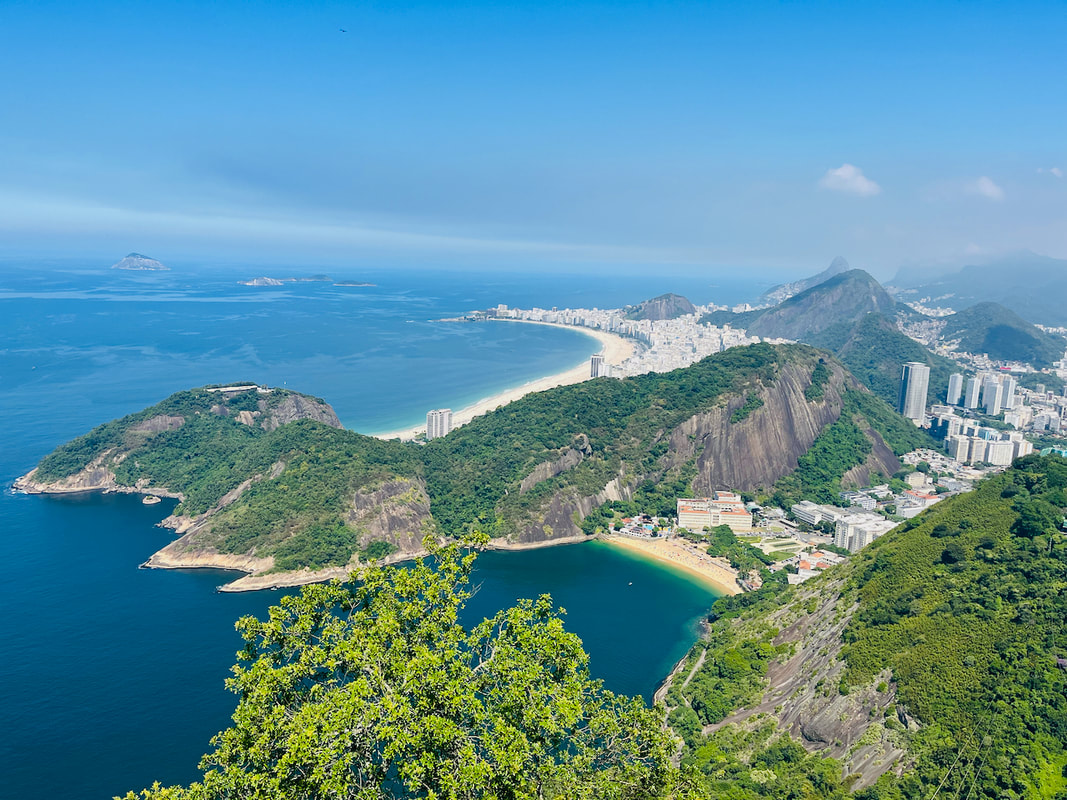

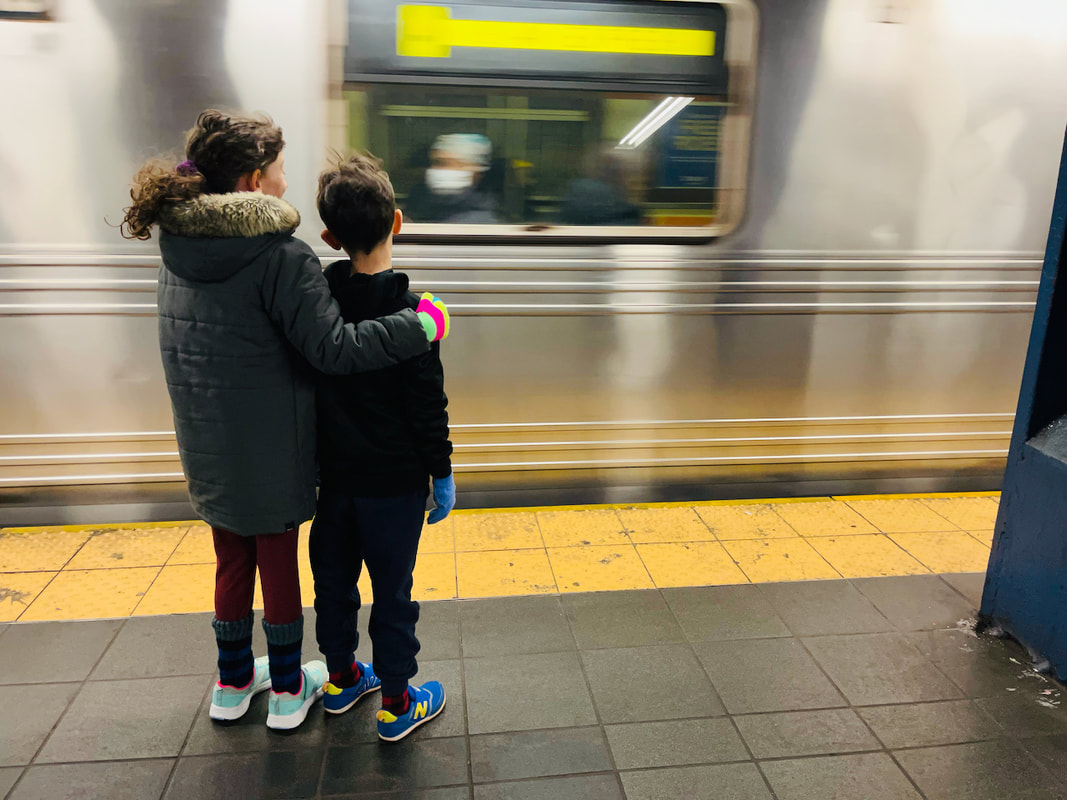
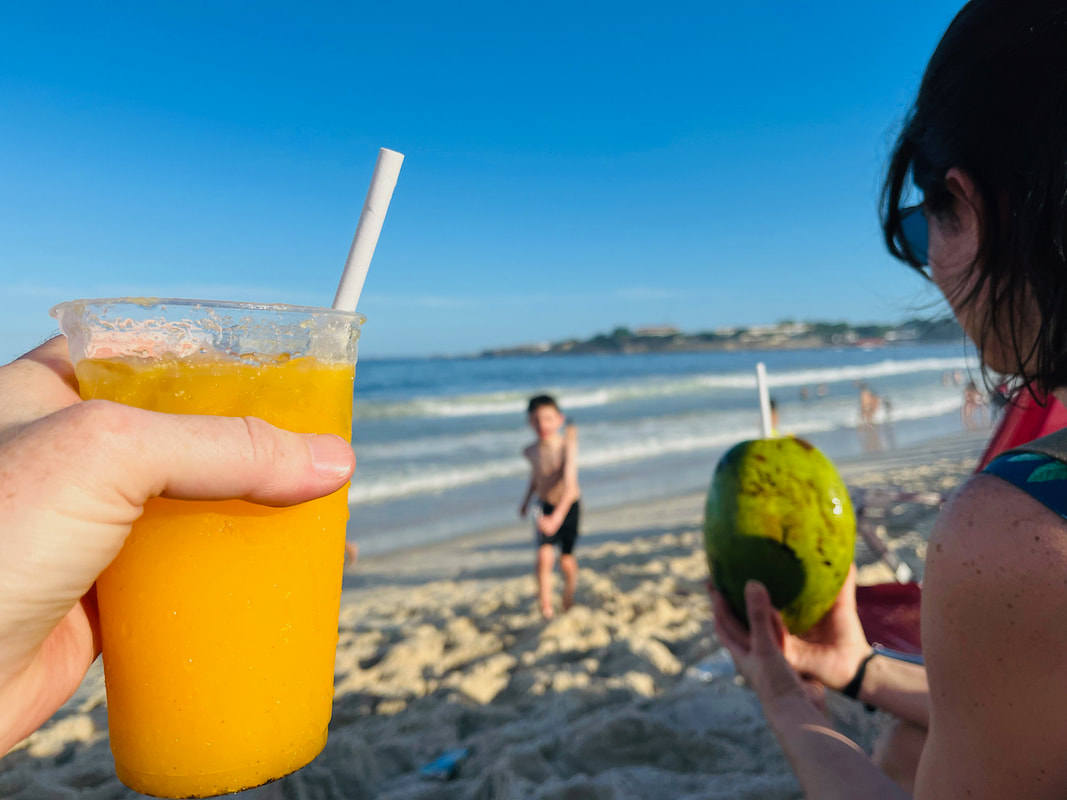
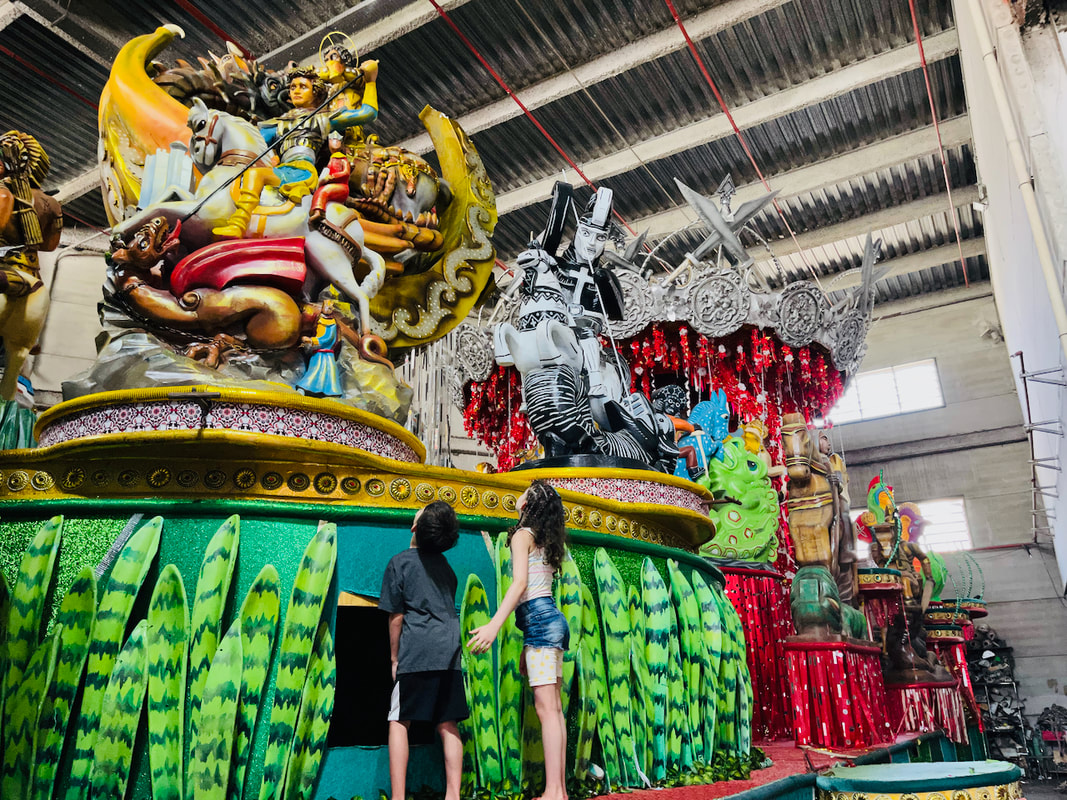
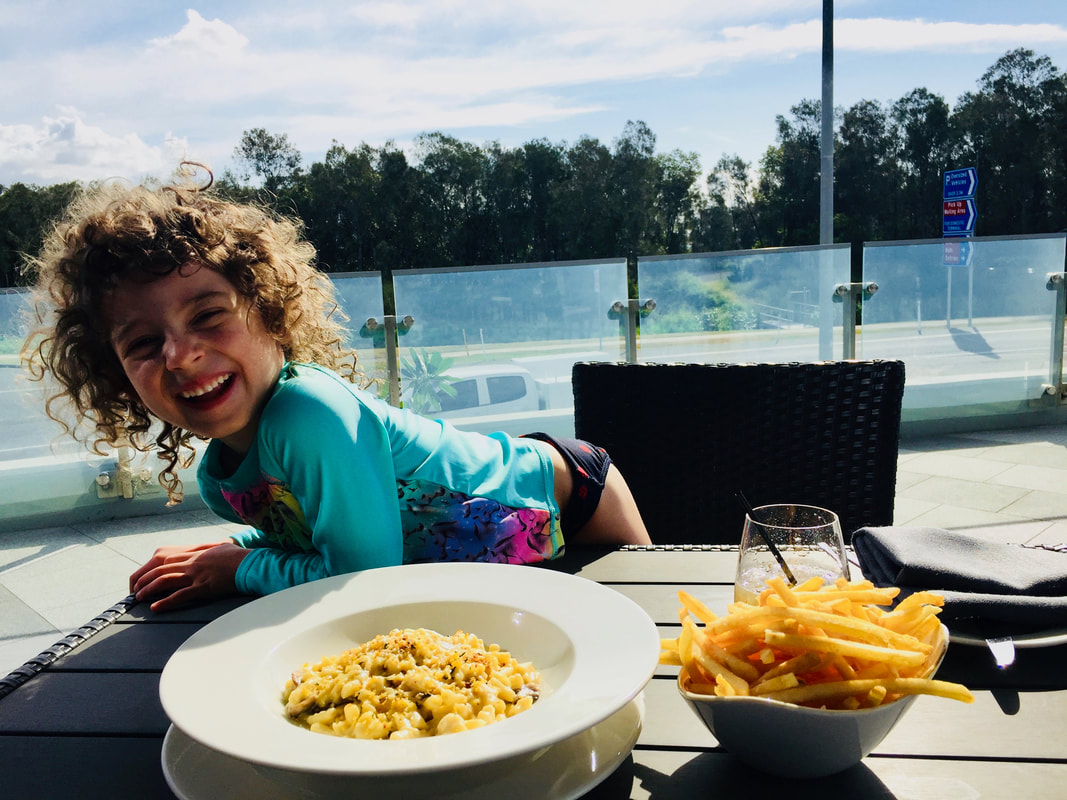
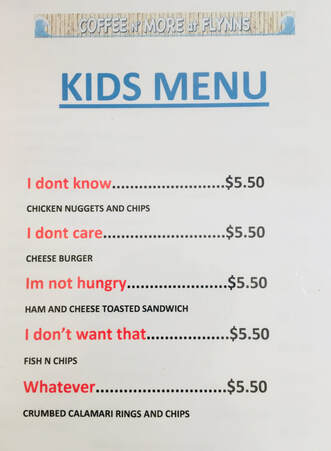
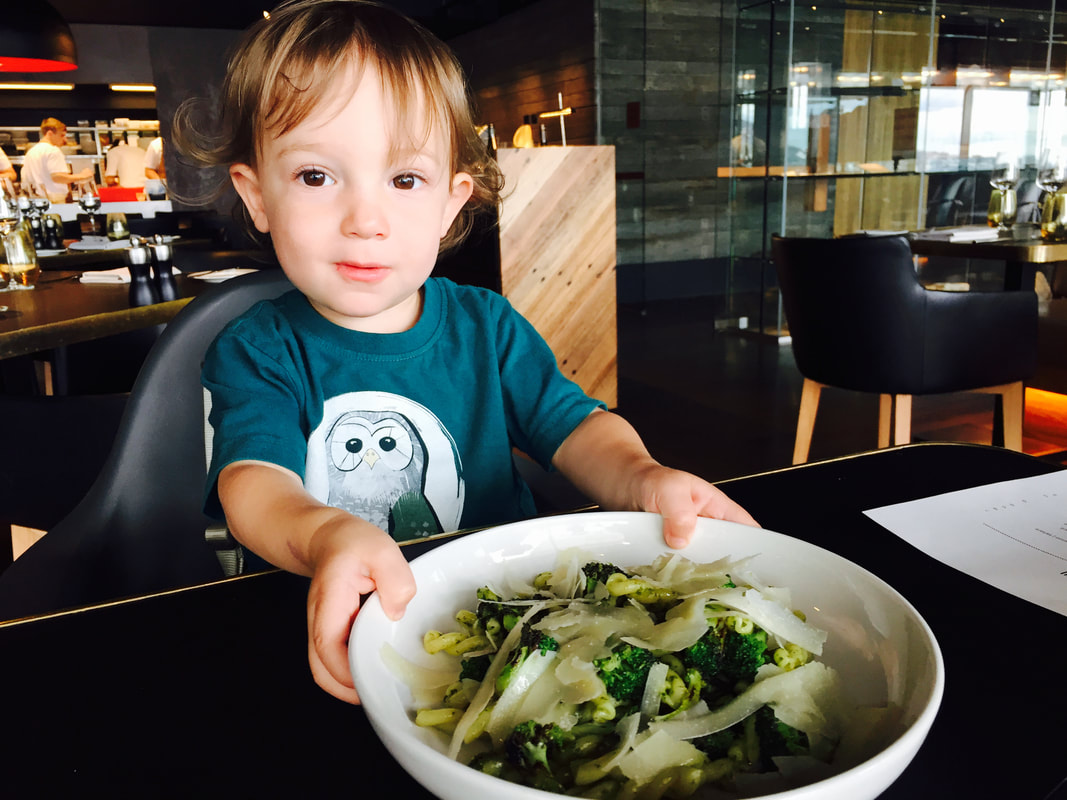
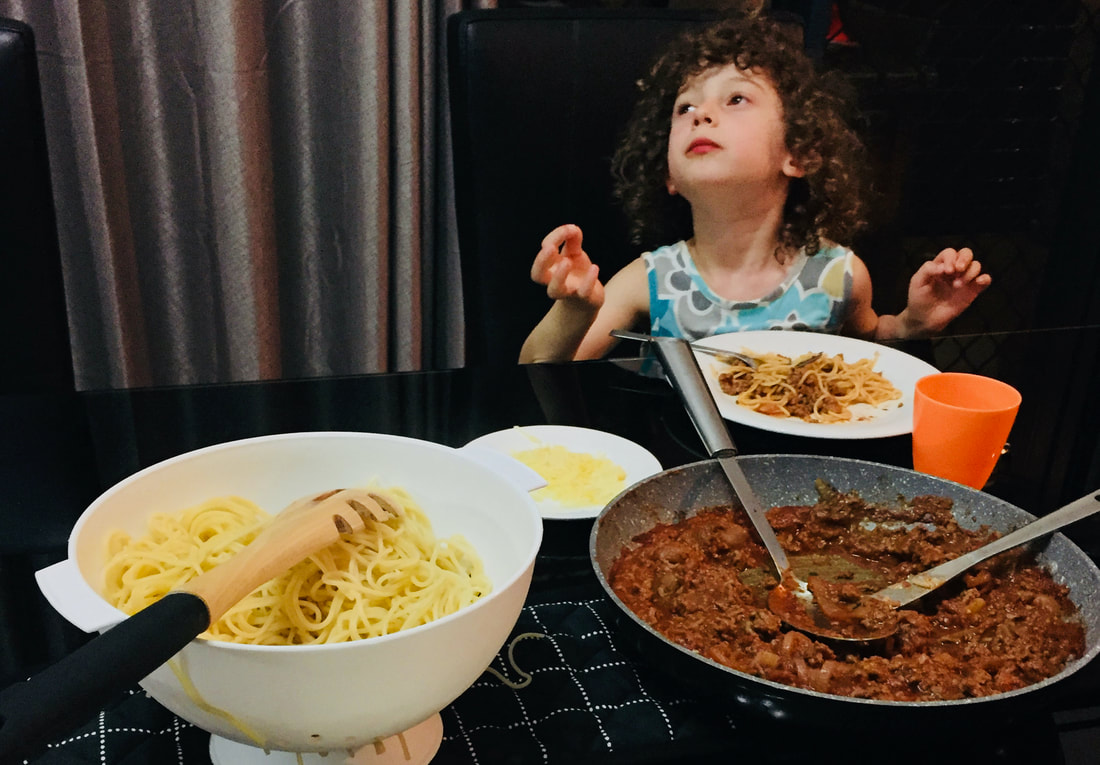

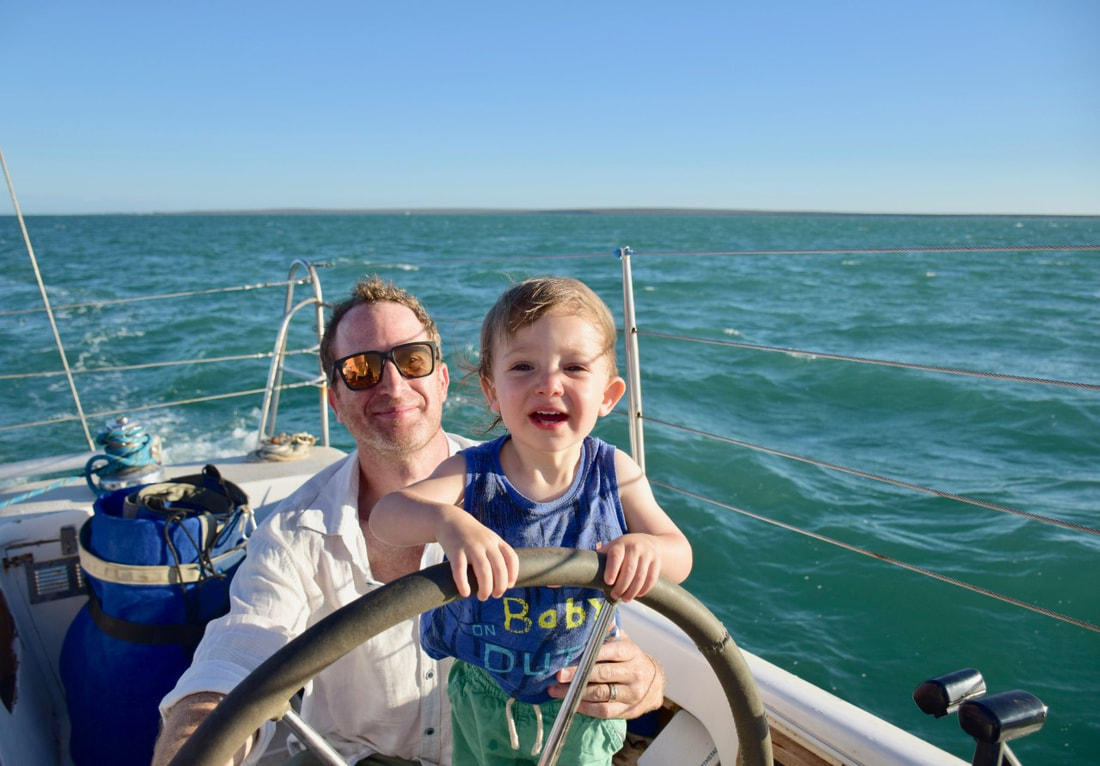
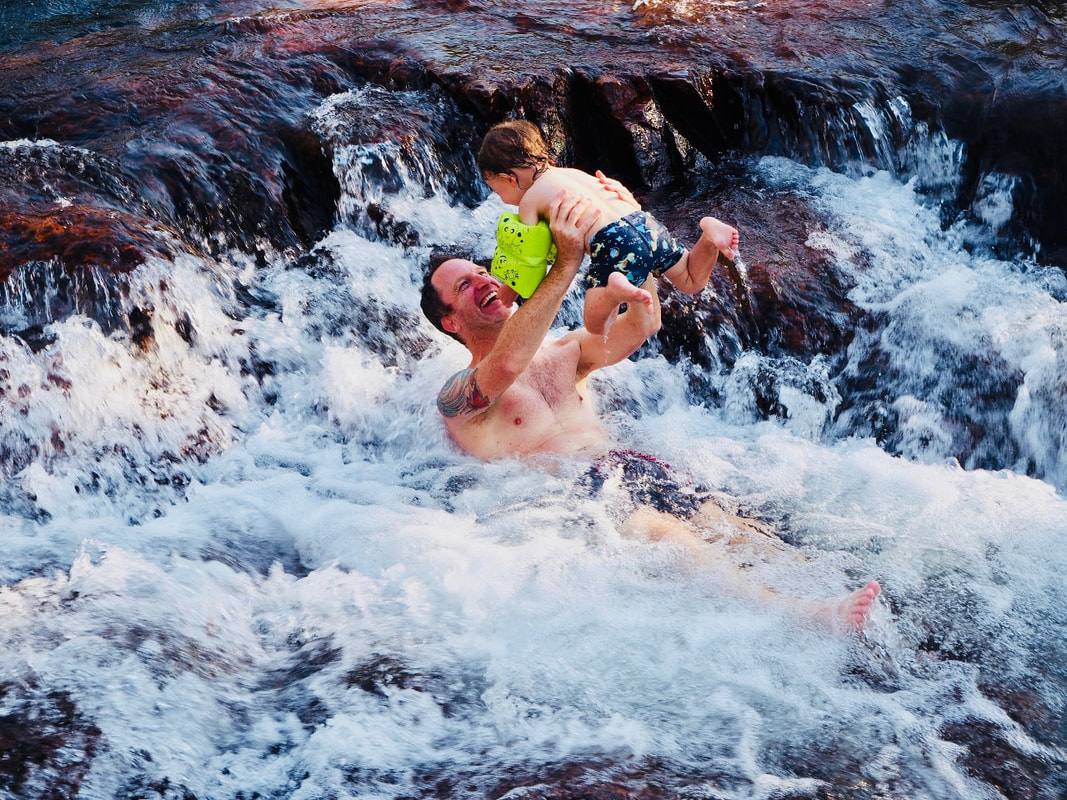
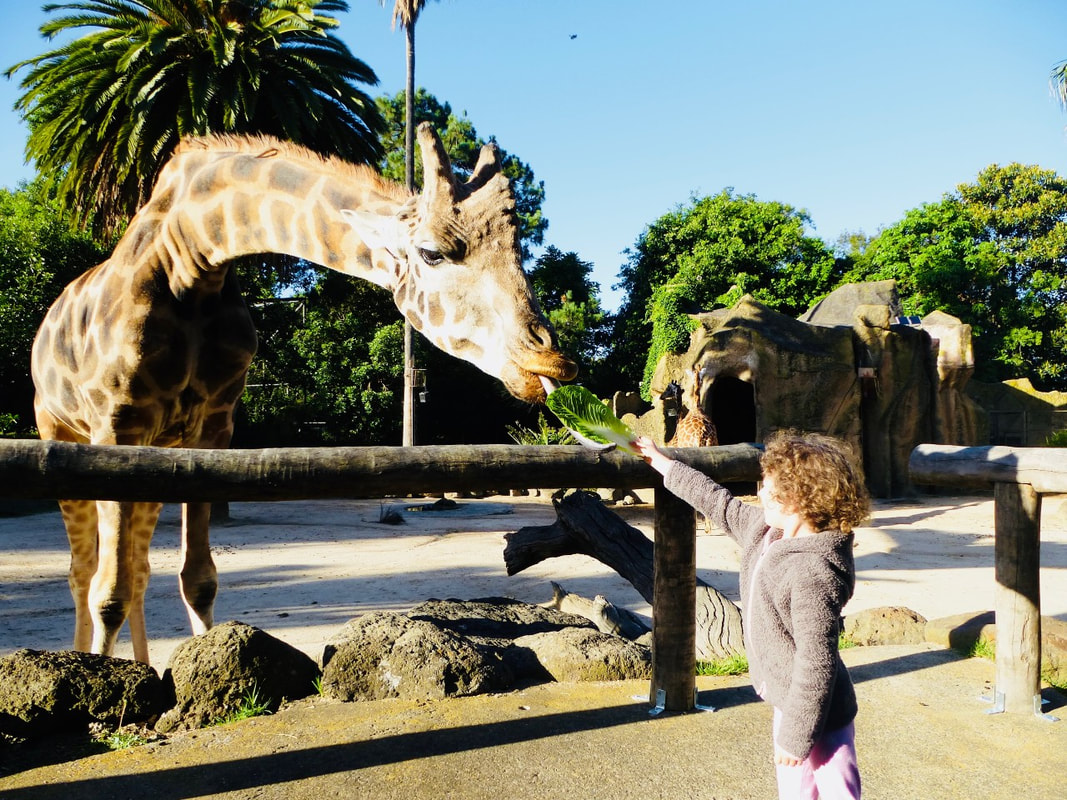
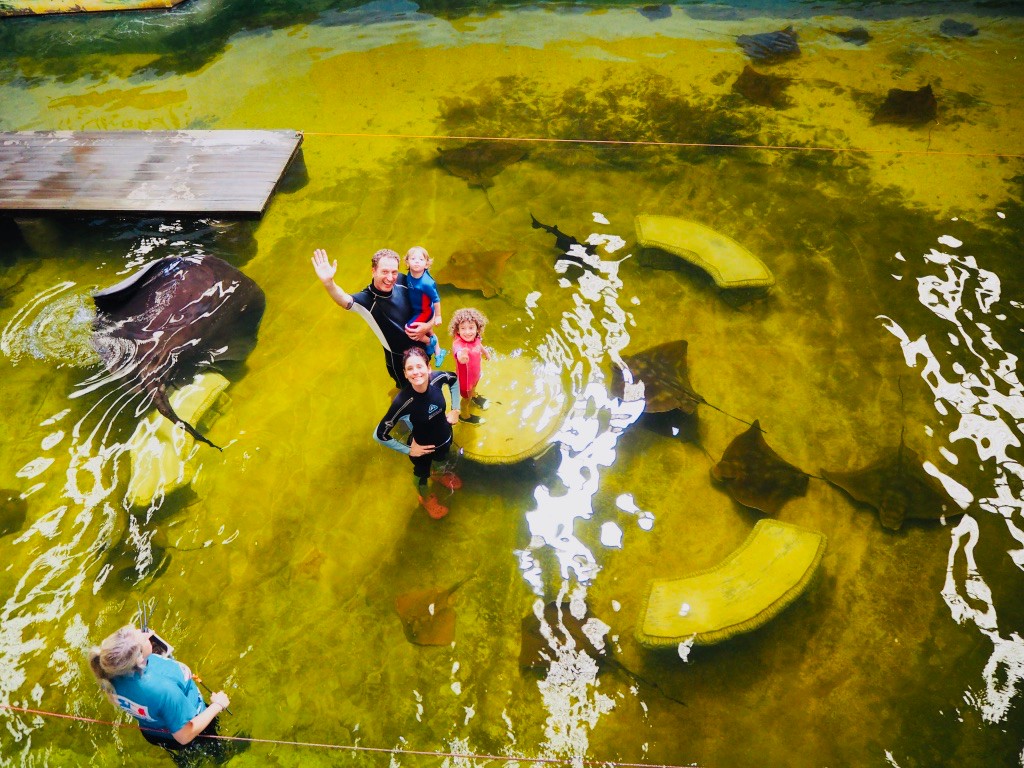
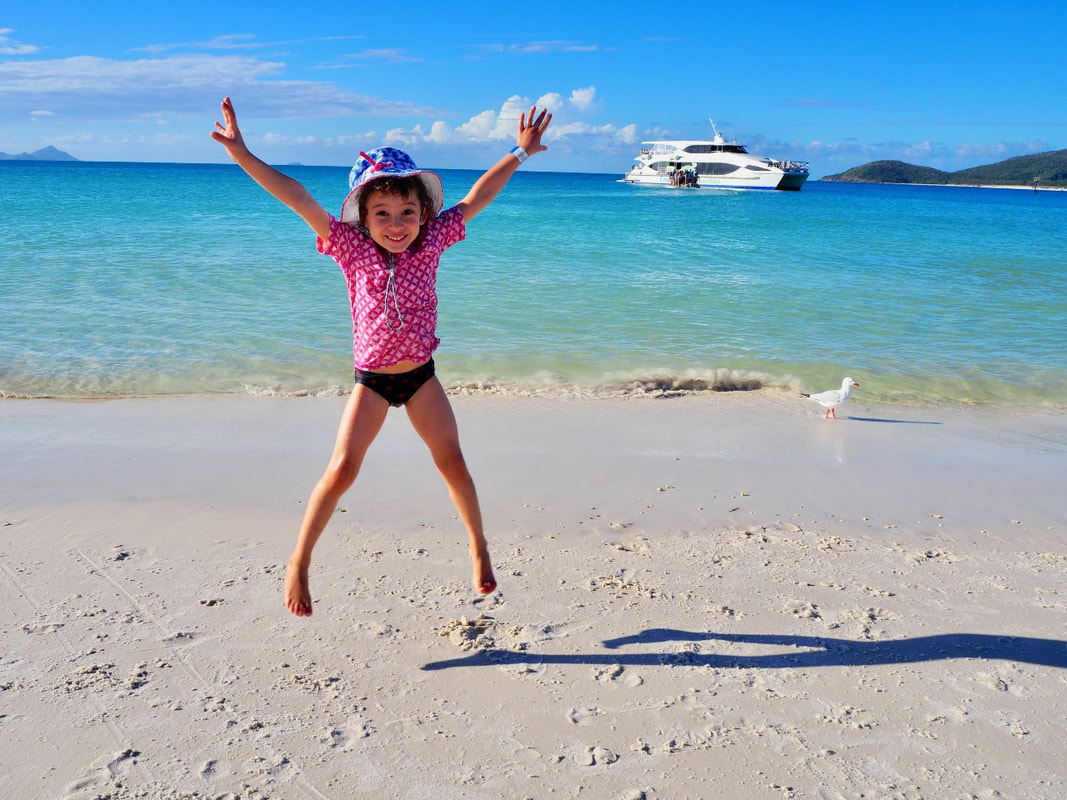
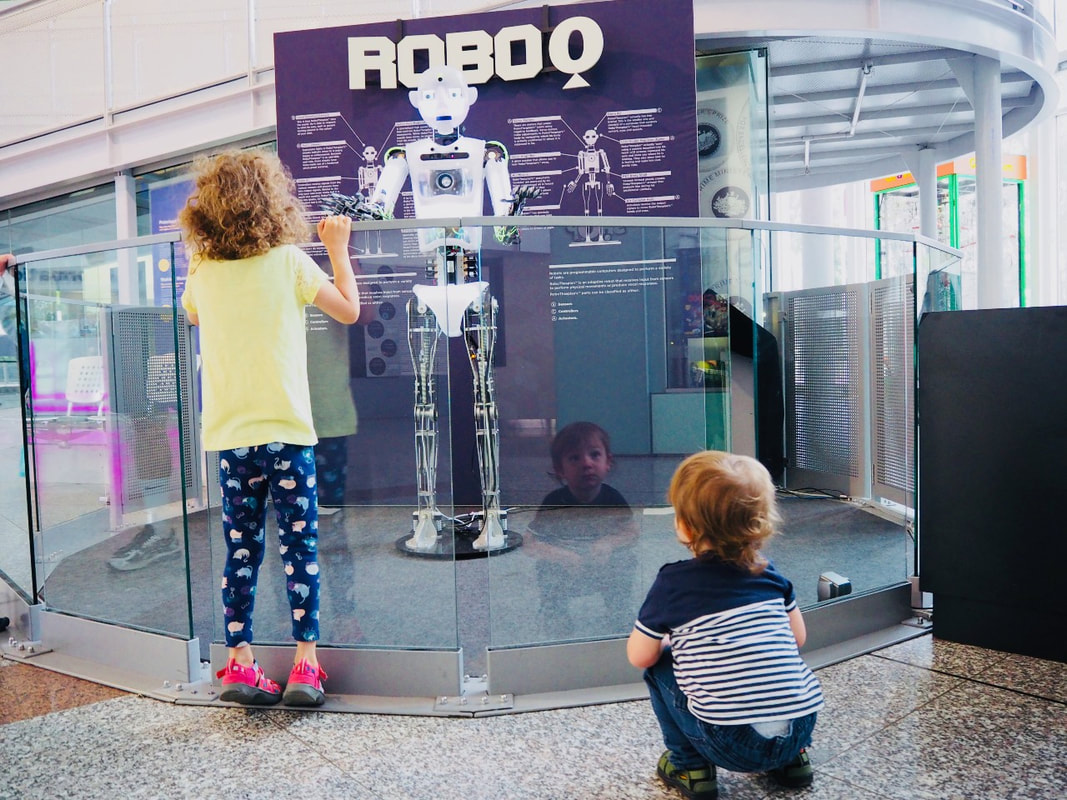
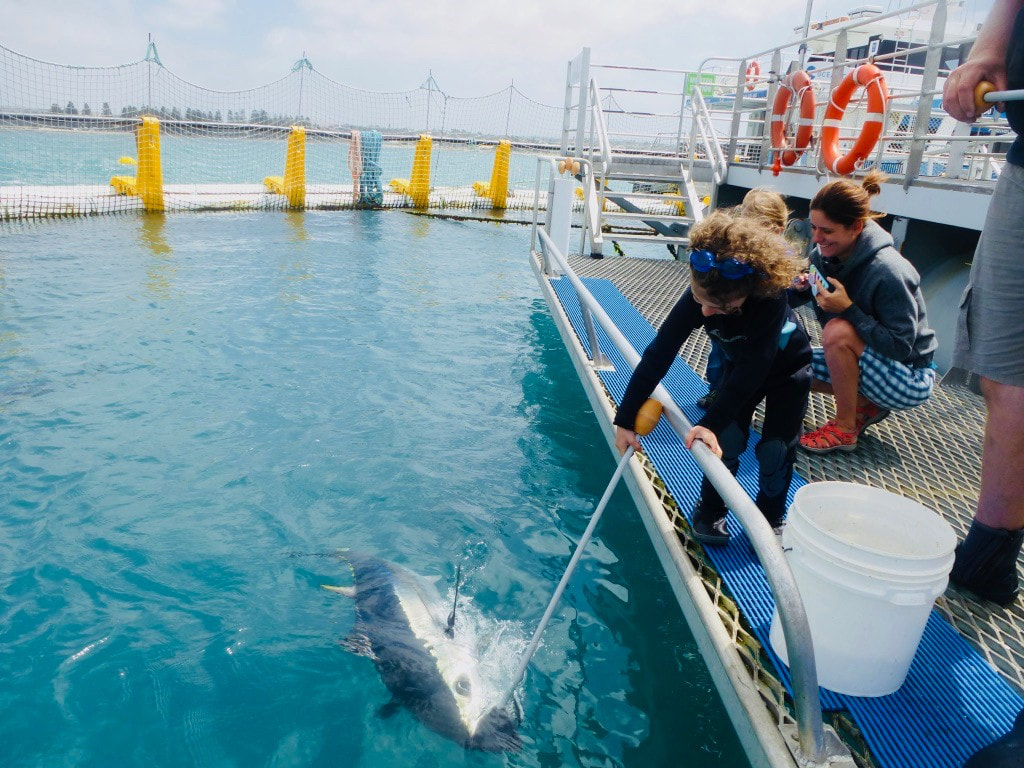
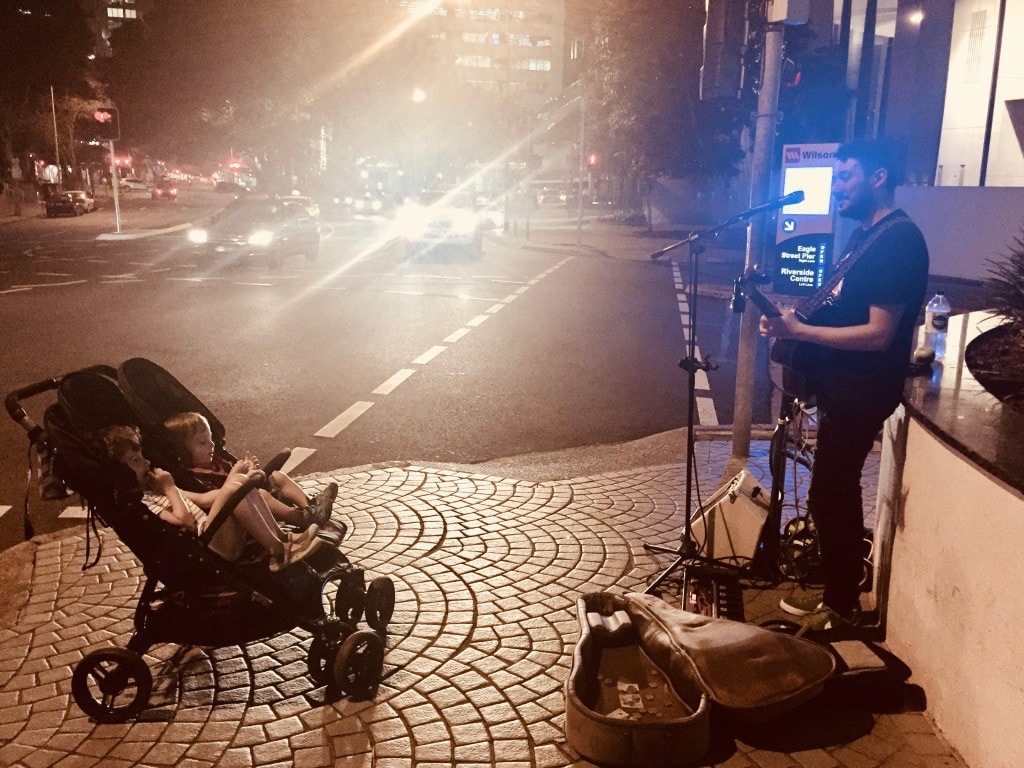

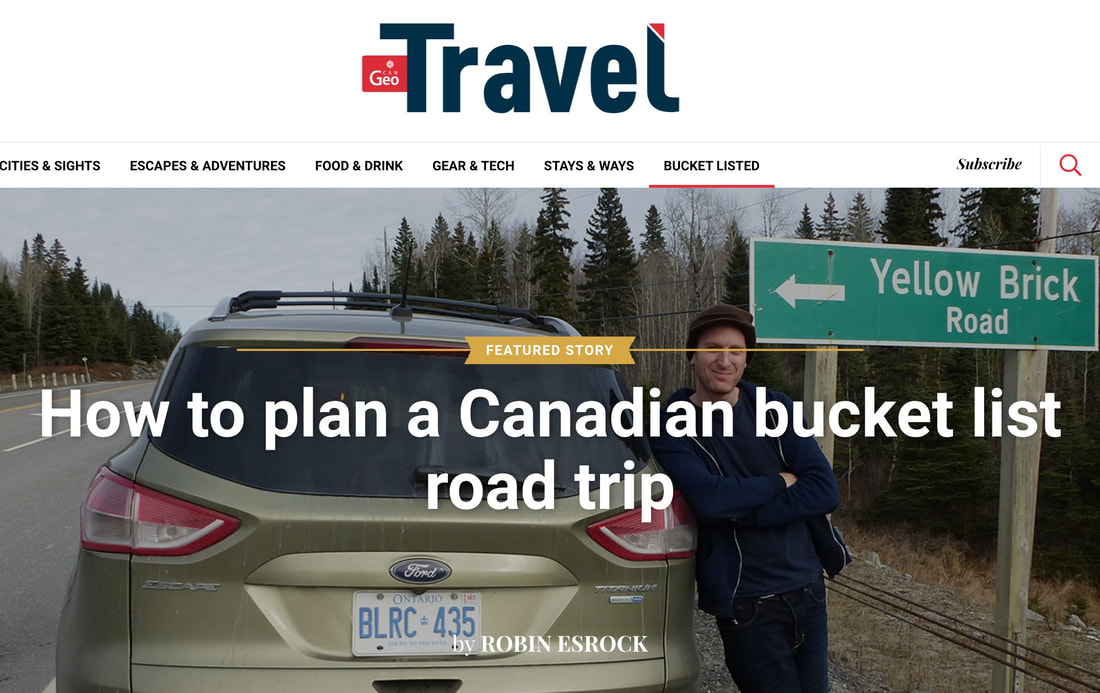
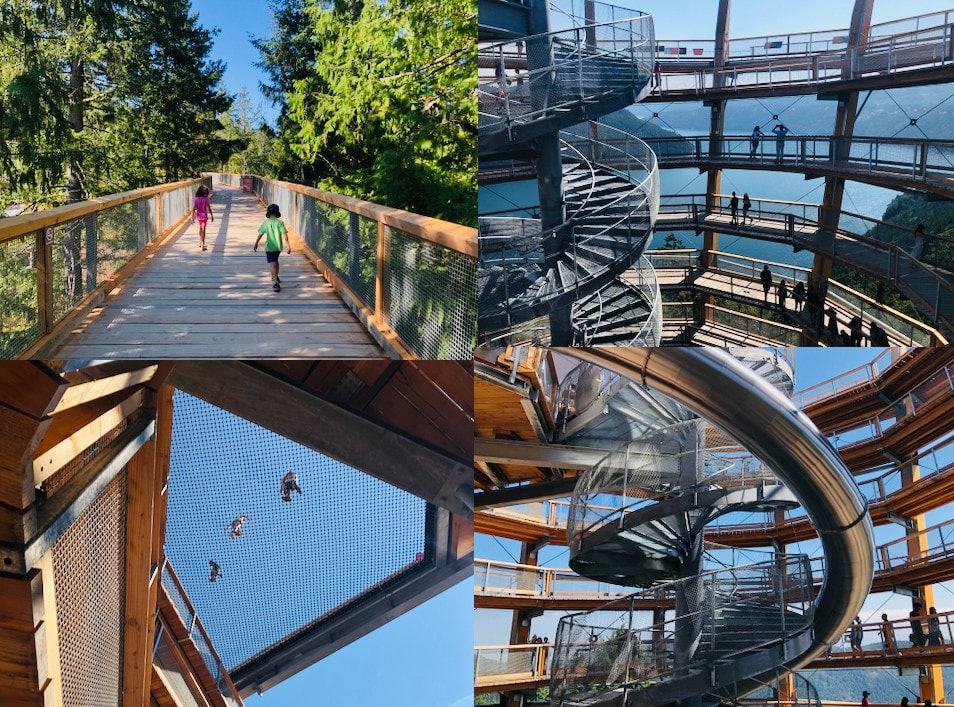
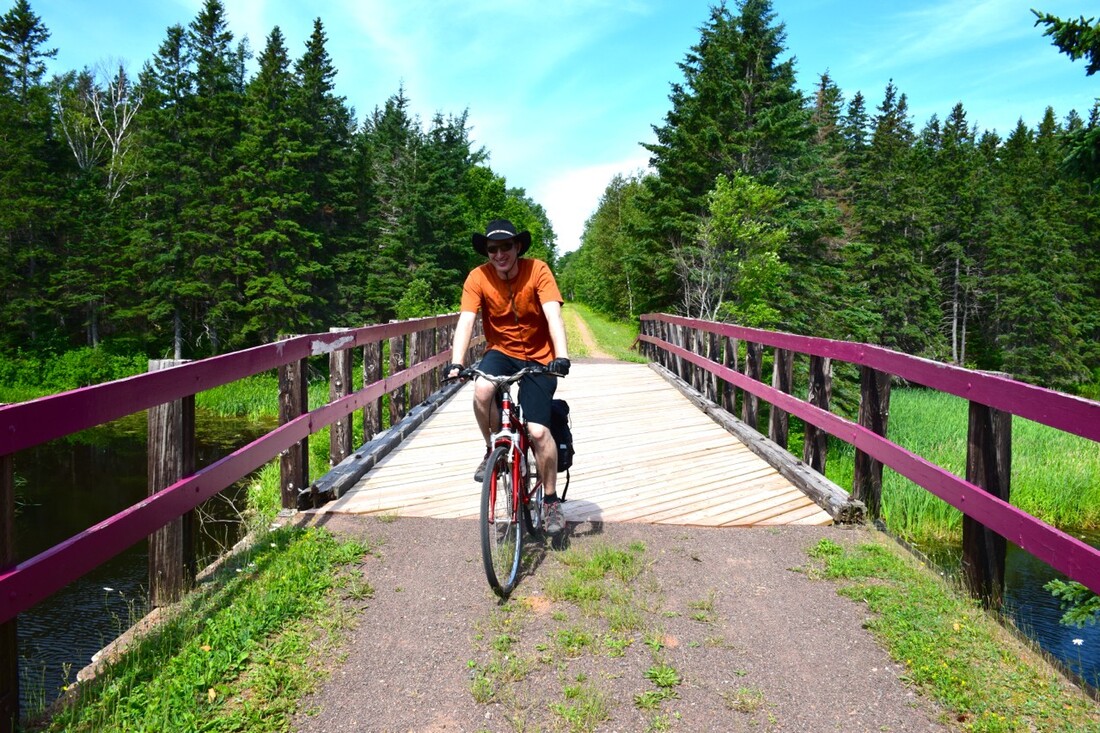

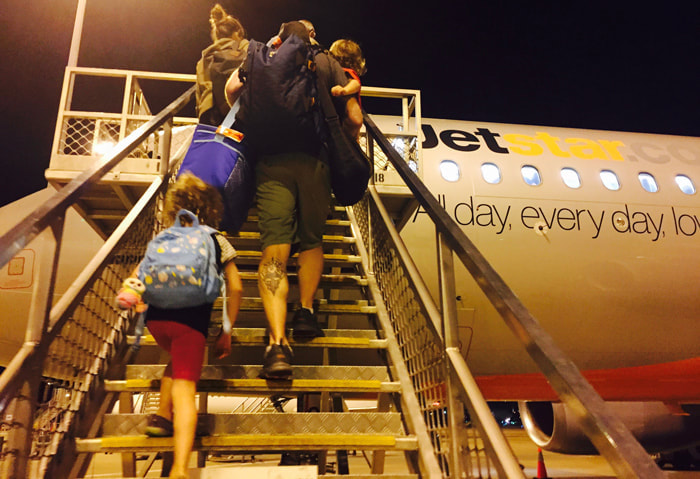
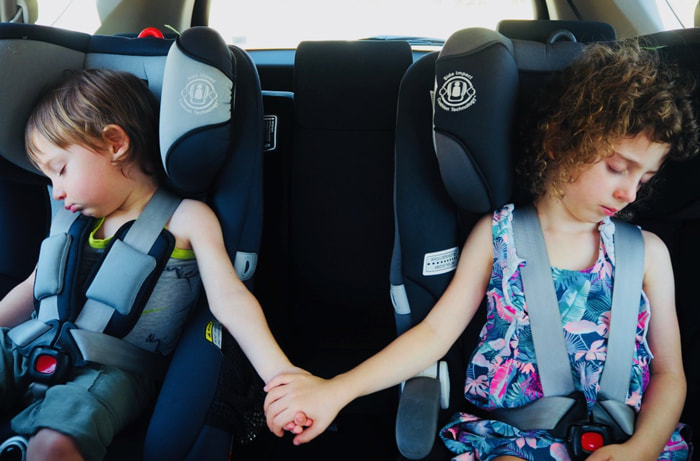
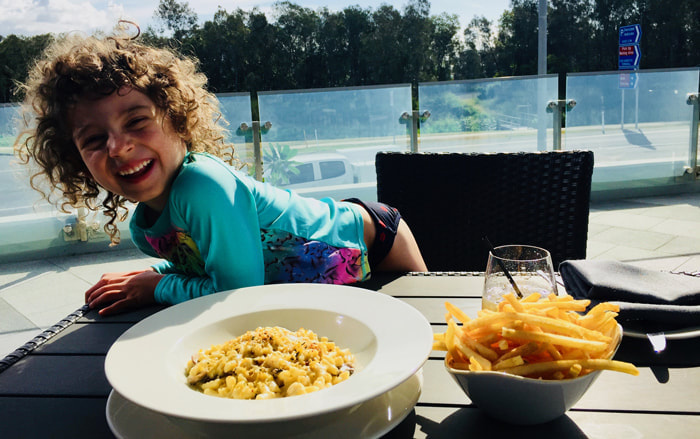
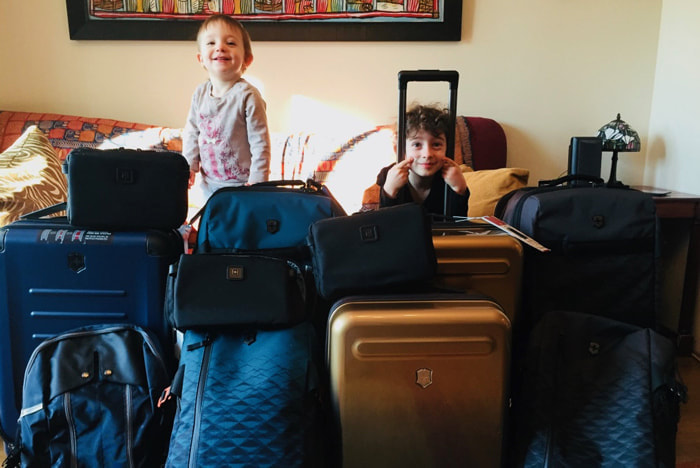
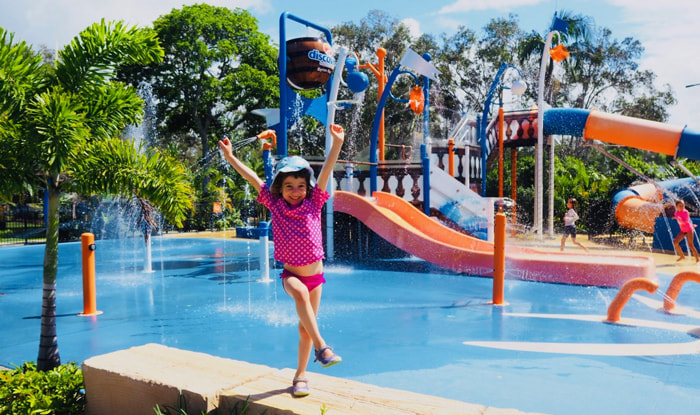
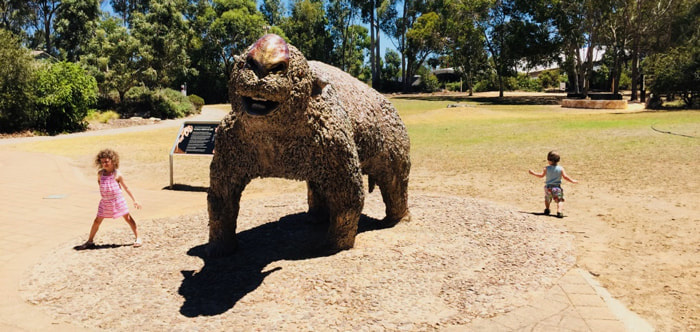
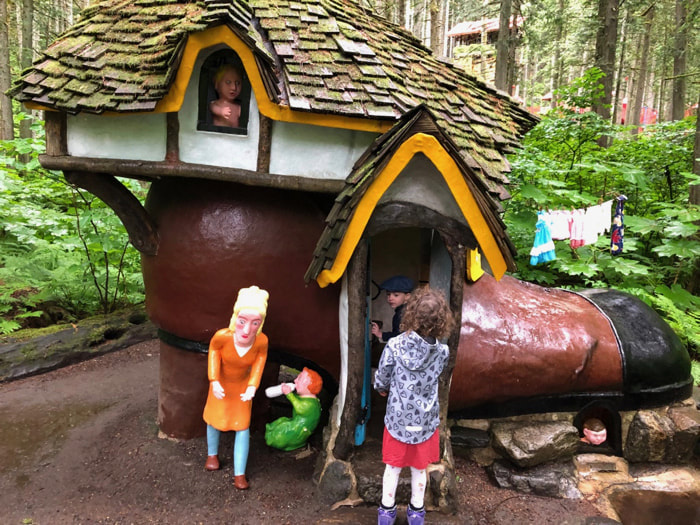
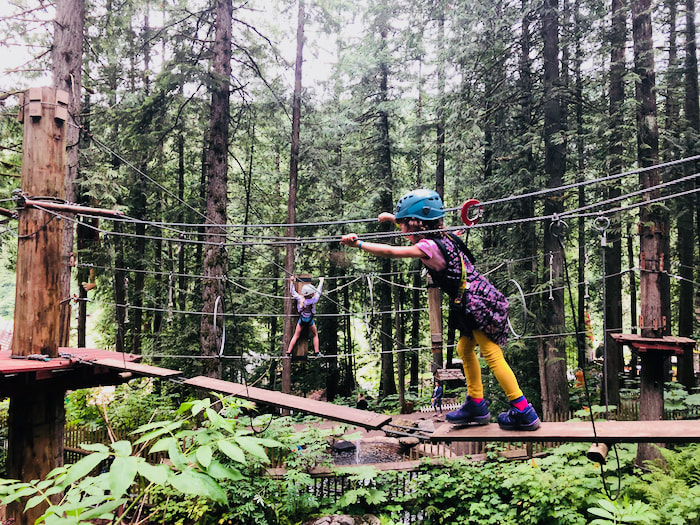
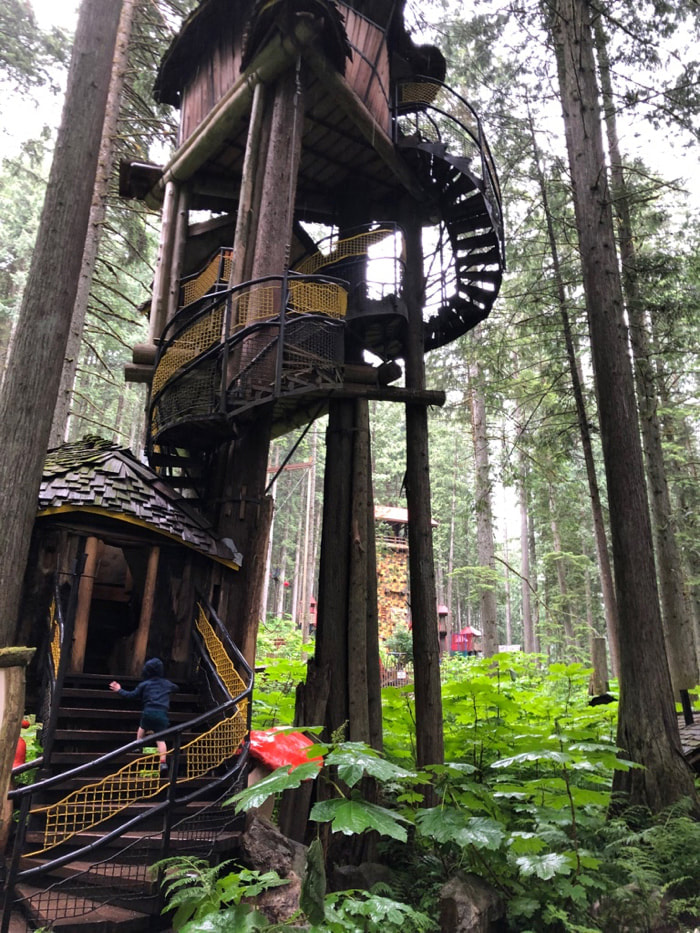
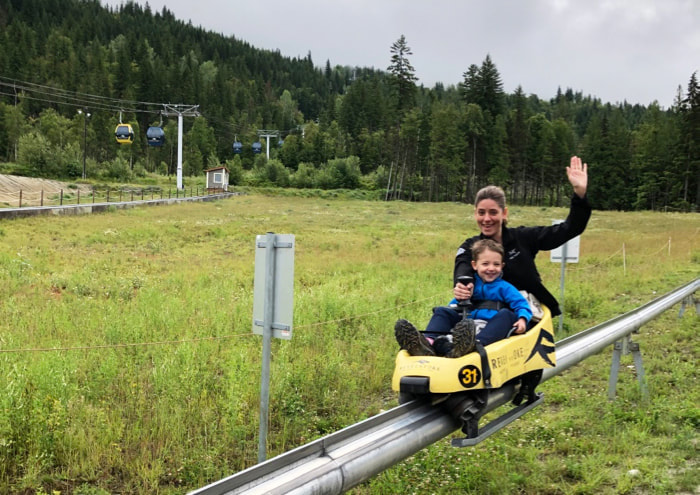
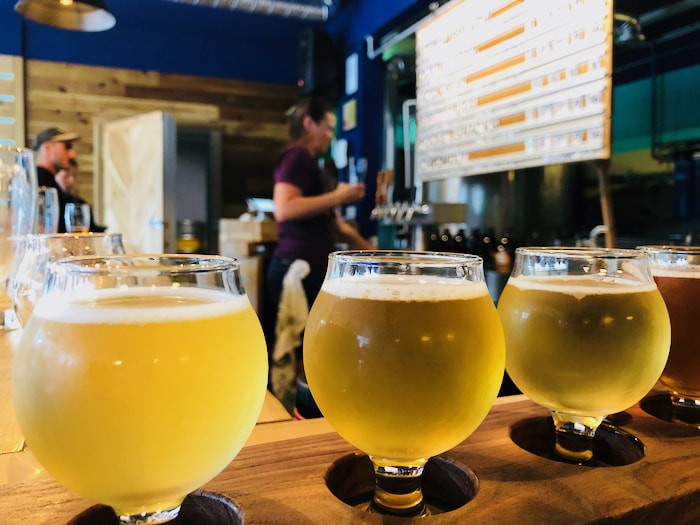

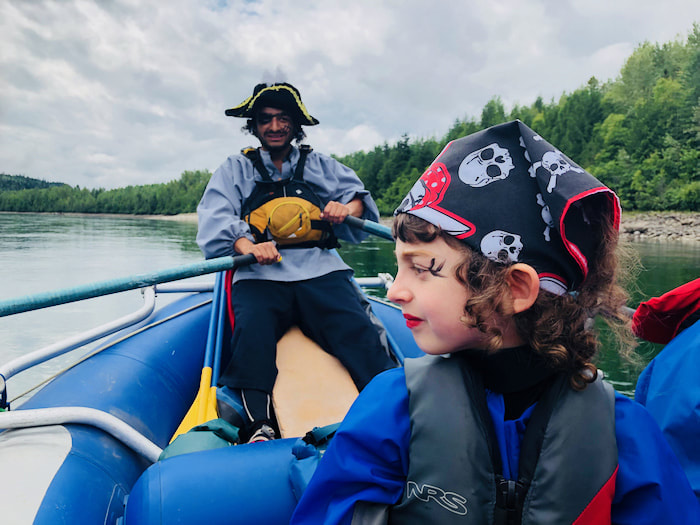
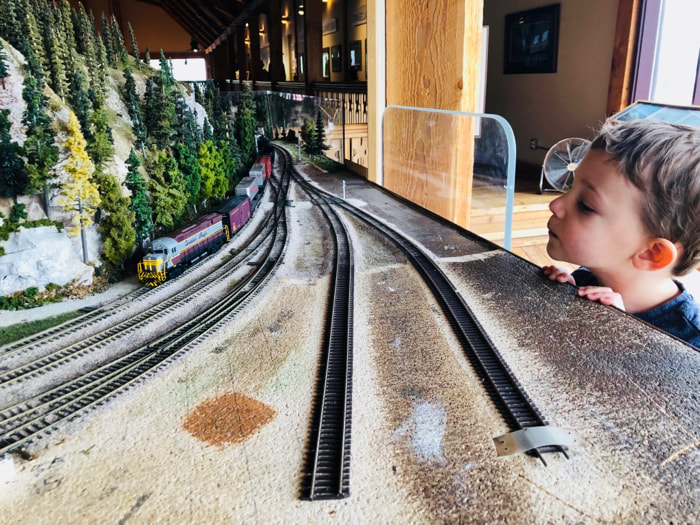
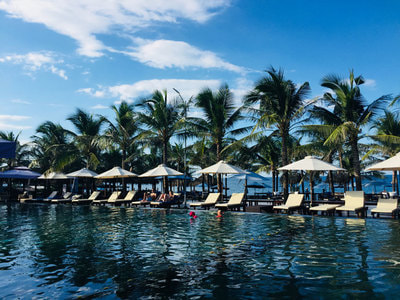
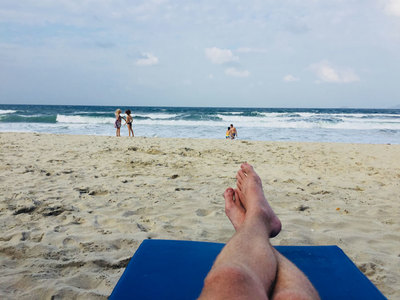
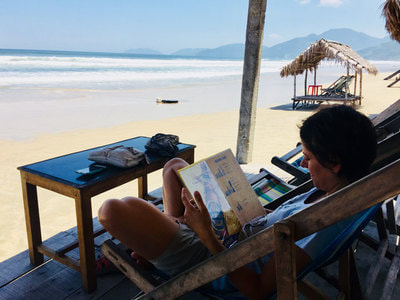
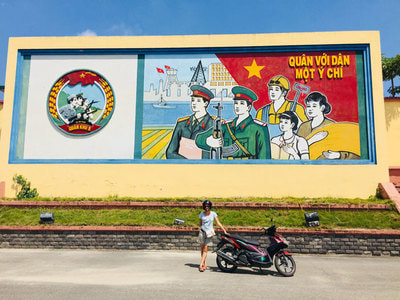
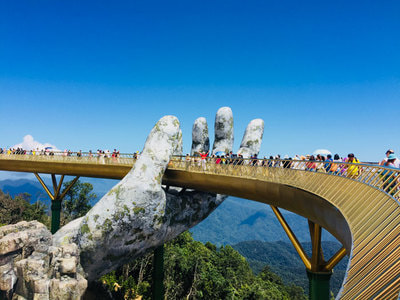
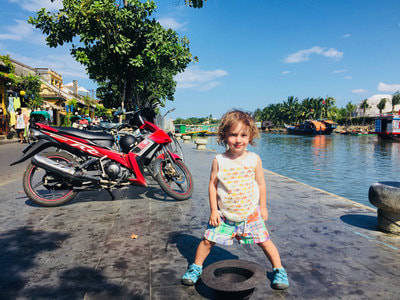
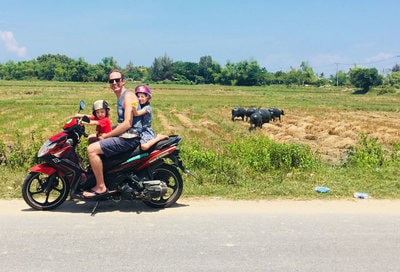
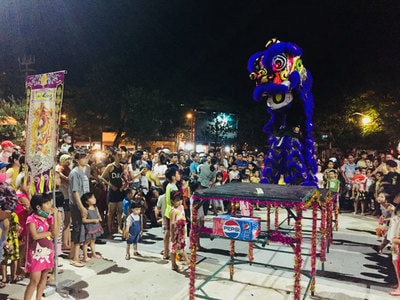
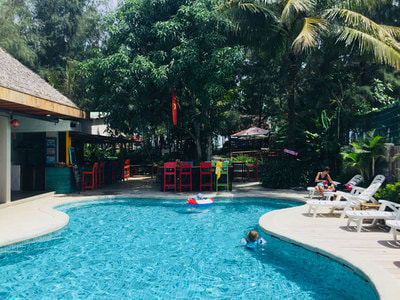
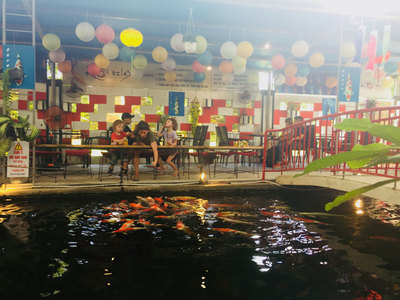
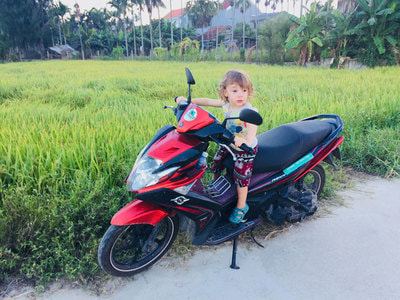
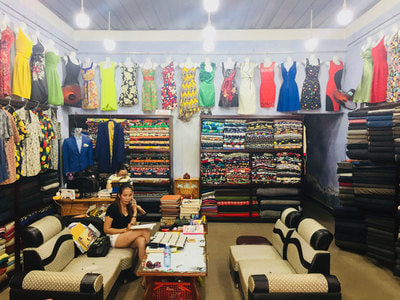
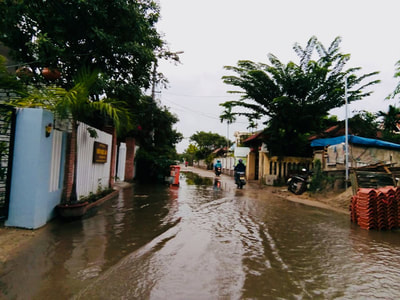
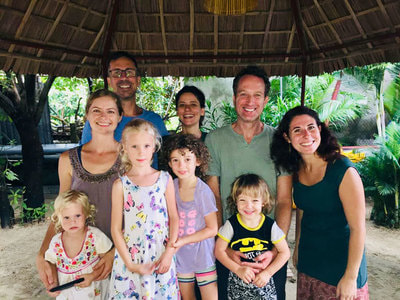
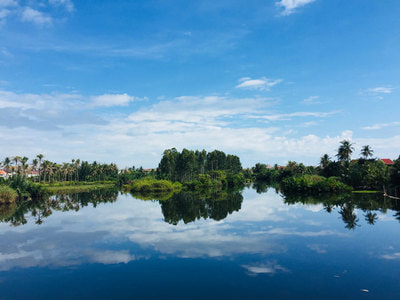
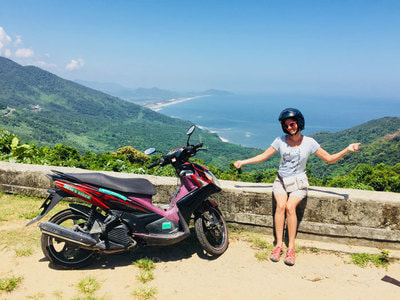
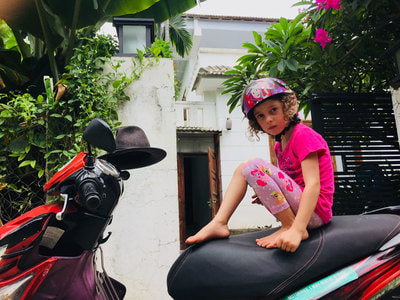
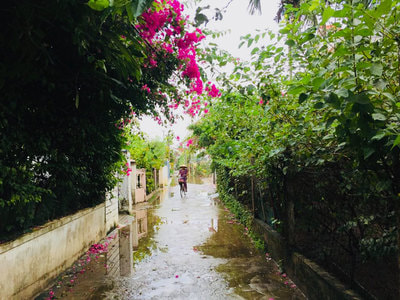
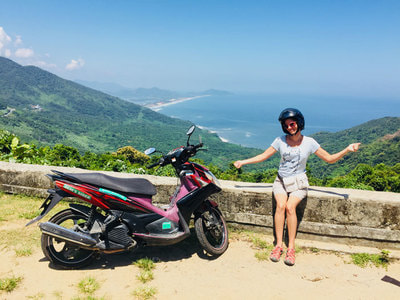
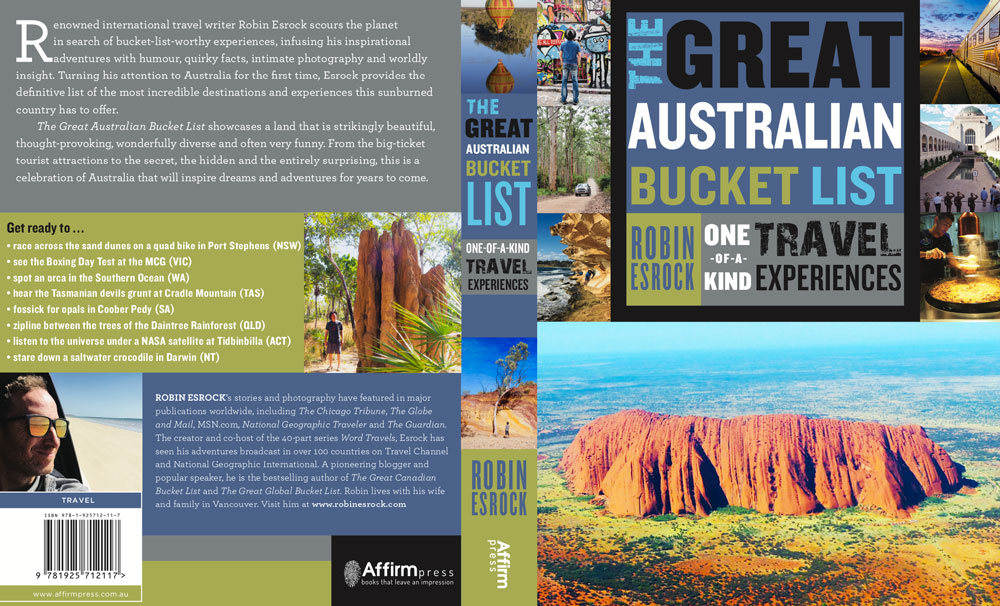
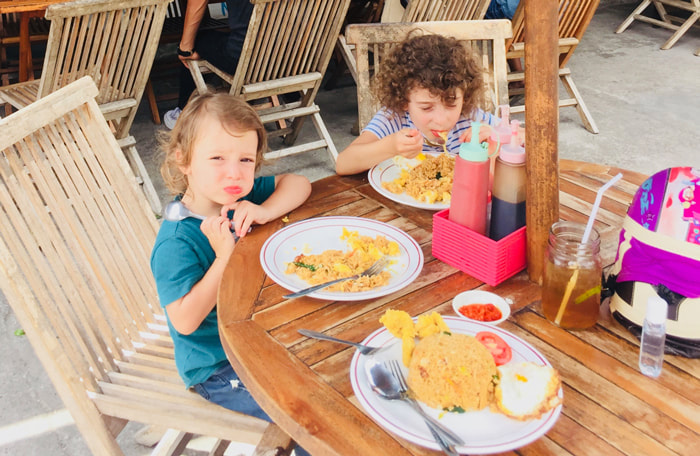
 RSS Feed
RSS Feed

